Elevate your adventures.
Subscribe to the Elinchrom UK newsletter to receive the latest offers, products, firmware, tutorials, and much more, straight to your inbox.
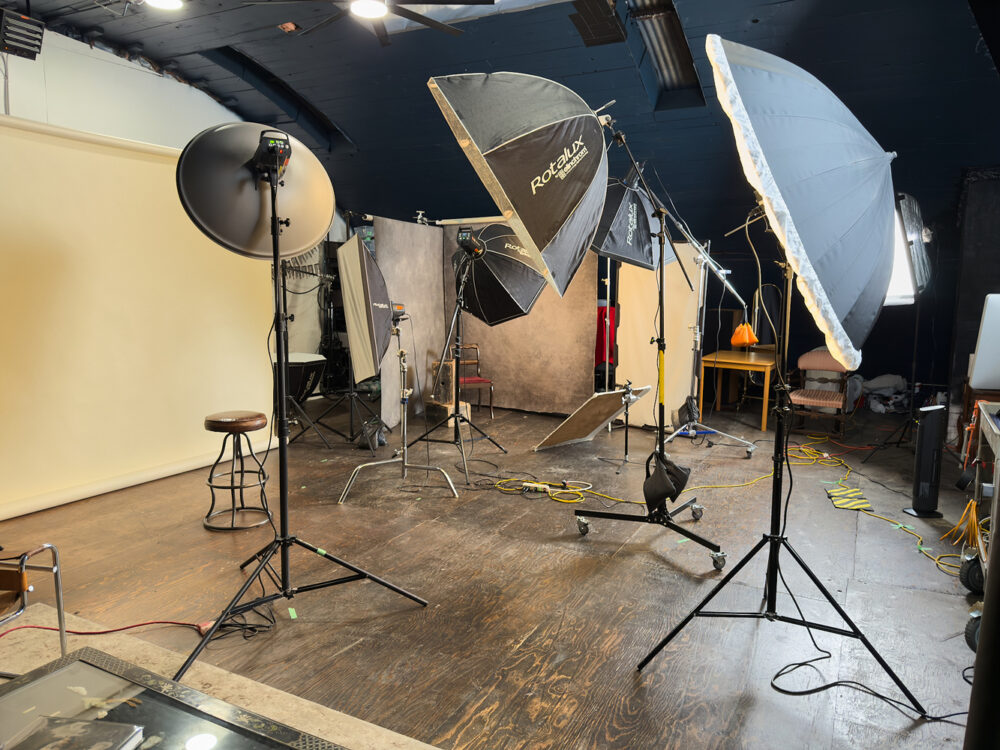
I’ve always believed that photographers should find some way to utilize their cameras for the greater good of society. While sustaining a successful business is essential, it is equally important to recognize our privilege and find ways to give back to the community.
Last Christmas, I set out to address food insecurity in British Columbia (Canada), where 20% of children experience hunger. To support this cause, I launched a fundraising initiative offering 10-minute portrait sessions in exchange for a minimum $25 donation to Backpack Buddies, a local charity that provides over 1.65 million meals to children each year.
Since 2012, I have relied on Elinchrom equipment for all my lighting needs. I’ve found their strobes to be extremely reliable, color accurate, fast, and versatile. The distinctive quality of light from their Rotalux modifiers, with their pebbled silver interiors and silky diffusion material, sets them apart from anything else on the market. Paired with the Elinchrom Transmitter Pro, this system allows me to focus on creativity without technical distractions, making it the perfect choice for this project.
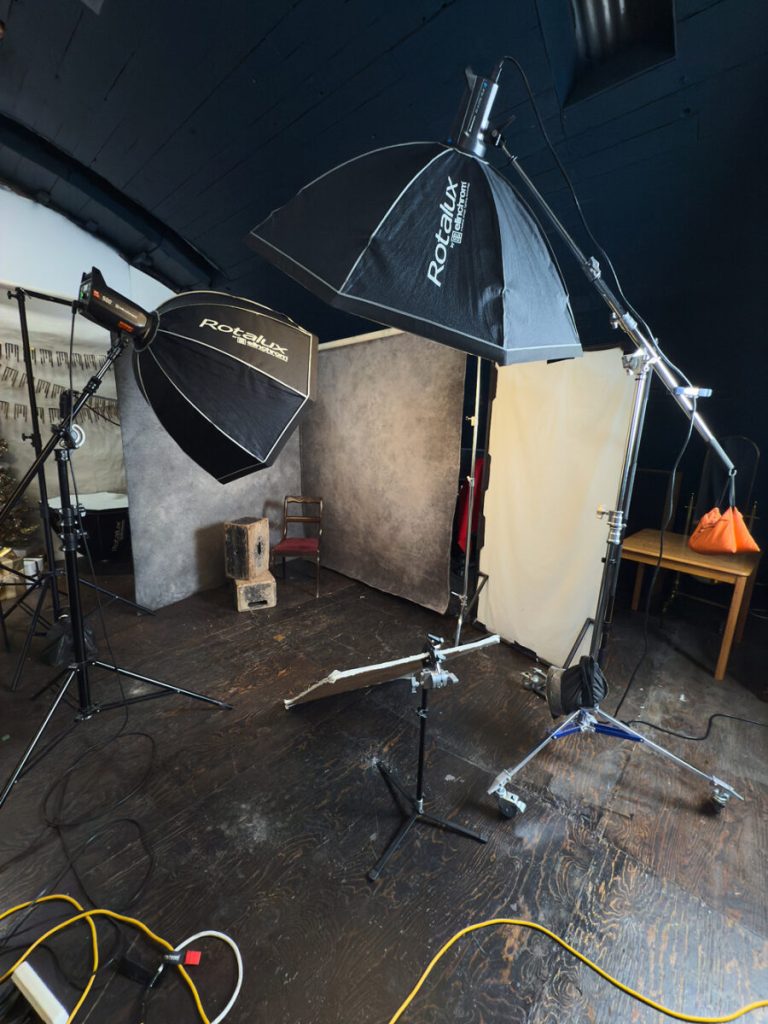
The Studio Setup
To create valuable experience for participants and provide them with a variety of images, I designed two distinct sets with three unique lighting configurations. Upon arrival, clients could choose which setup(s) they preferred, with some opting for all three.
Setup 1: Classic Portrait Corner

This setup featured two painted canvas backdrops arranged as a corner. The key light was an ELC Pro HD 500 fitted with a 39” Rotalux Deep Octa, complemented by a D-Lite RX4 boomed overhead with a 53” Rotalux Octa for fill. To further enhance the lighting, I added a large white fill board on the right side and a small white fill board below, clamped to a floor stand.
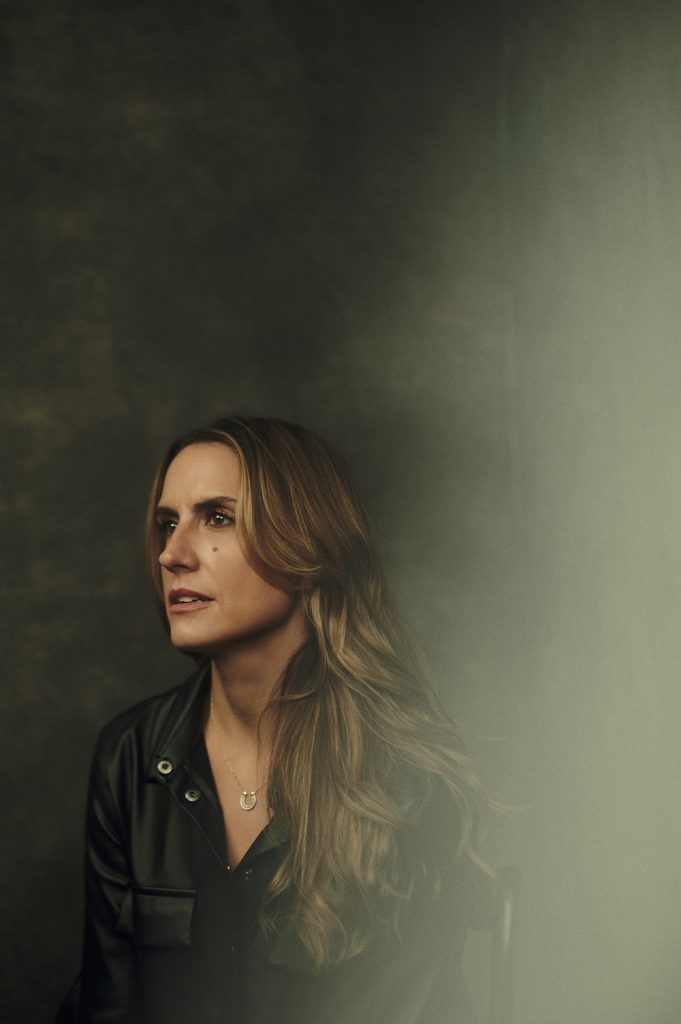
Setup 2: Vibrant & Creative
This configuration utilized a cream-colored backdrop with bold, colorful lighting. A D-Lite RX4, modified with a 70cm white beauty dish and a red gel, served as the key light. A D-Lite RX ONE with a 35x100cm strip box and a cyan gel acted as the second light, creating a striking two-tone effect. To add even more dynamism, I experimented with slow shutter speeds to incorporate ambient LED lighting for an artistic, motion-blended effect.
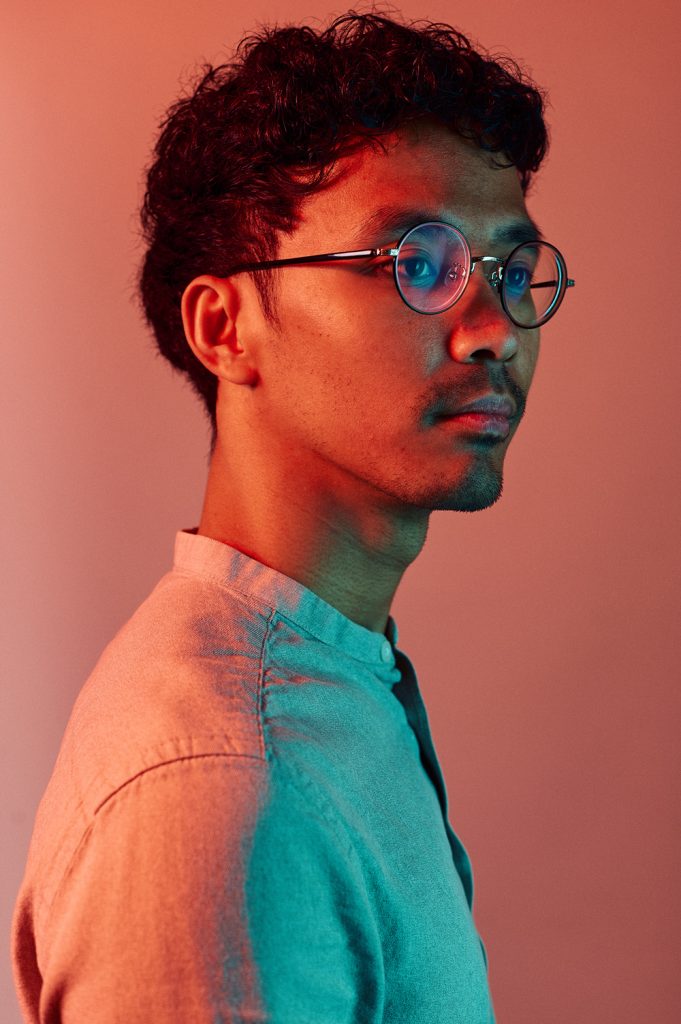
Setup 3: Professional Headshots
For clients wanting a ‘LinkedIn’ type headshot, I designed a clean, professional lighting setup. The key light was a D-Lite RX4 inside a 59” Rotalux Indirect Octa, using only internal diffusion, positioned camera right. Behind me, I placed a D-Lite 4 with a diffused 64” umbrella to create soft, even fill. Since the older D-Lite 4 lacked a built-in receiver, I activated it manually as needed, using its photocell to sync with the primary strobe.
Streamlined Workflow
Thanks to the Elinchrom Transmitter Pro, I could seamlessly switch between setups by adjusting the groups on-the-fly, allowing me to maintain focus on my subjects. Shooting tethered via a Tether Tools cable further optimized the process, providing real-time previews for both me and my clients. This not only ensured precise lighting adjustments but also allowed participants to get an immediate glimpse of their portraits.
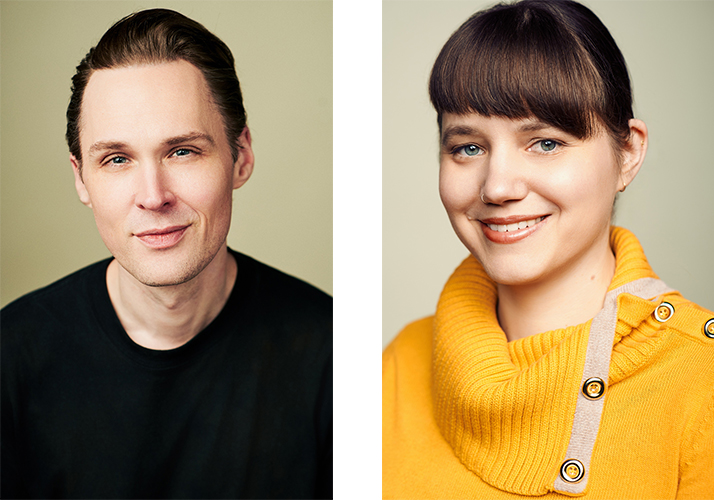
A Rewarding Experience
This project was a lot of fun and extremely rewarding. Together, we raised $635 Canadian dollars for Backpack Buddies, helping to provide meals for children in need during the holiday season. Beyond the fundraising success, I had the opportunity to meet incredible people and create meaningful portraits with them. I’m already looking forward to running this initiative again next year!
Elinchrom ambassador Aaron Aubrey set out to use his craft in service of a greater cause. Over the holidays 2024, he designed a fundraising portrait initiative powered by a multi-setup studio built for efficiency and creative flexibility. Relying on ELC Pro HD and D-Lite RX heads, Rotalux modifiers, and the Elinchrom Transmitter Pro, Aaron created […]

Elinchrom, a leader in professional lighting solutions for over 60 years, proudly introduces the LED 100 C, its first-ever continuous light. Designed to meet the evolving needs of photographers, videographers, and content creators, the LED 100 C delivers professional-grade performance in a compact and portable package.
“The launch of the LED 100 C is an exciting new adventure for Elinchrom. For decades, we have been at the forefront of flash innovation, and now, we are embracing continuous lighting to support the evolving needs of today’s creatives. This is just the beginning of a new chapter, and we can’t wait to see how photographers and content creators integrate the LED 100 C into their workflows” says Simon Whittle, CEO of Elinchrom.

The Elinchrom LED 100 C is a 100W continuous light, offering bi-color and RGB capabilities in a lightweight, battery-powered design. With a high CRI of 95+, it ensures true-to-life color accuracy, making it an ideal choice for both photography and videography.
To complement the LED 100 C, Elinchrom is developing a new ecosystem of accessories, including the OCF Bowens Adapter, OCF Hyper Reflector, and new accessories such as Spot Lite, ensuring maximum compatibility with existing Elinchrom systems such as the Elinchrom ONE and Elinchrom THREE.
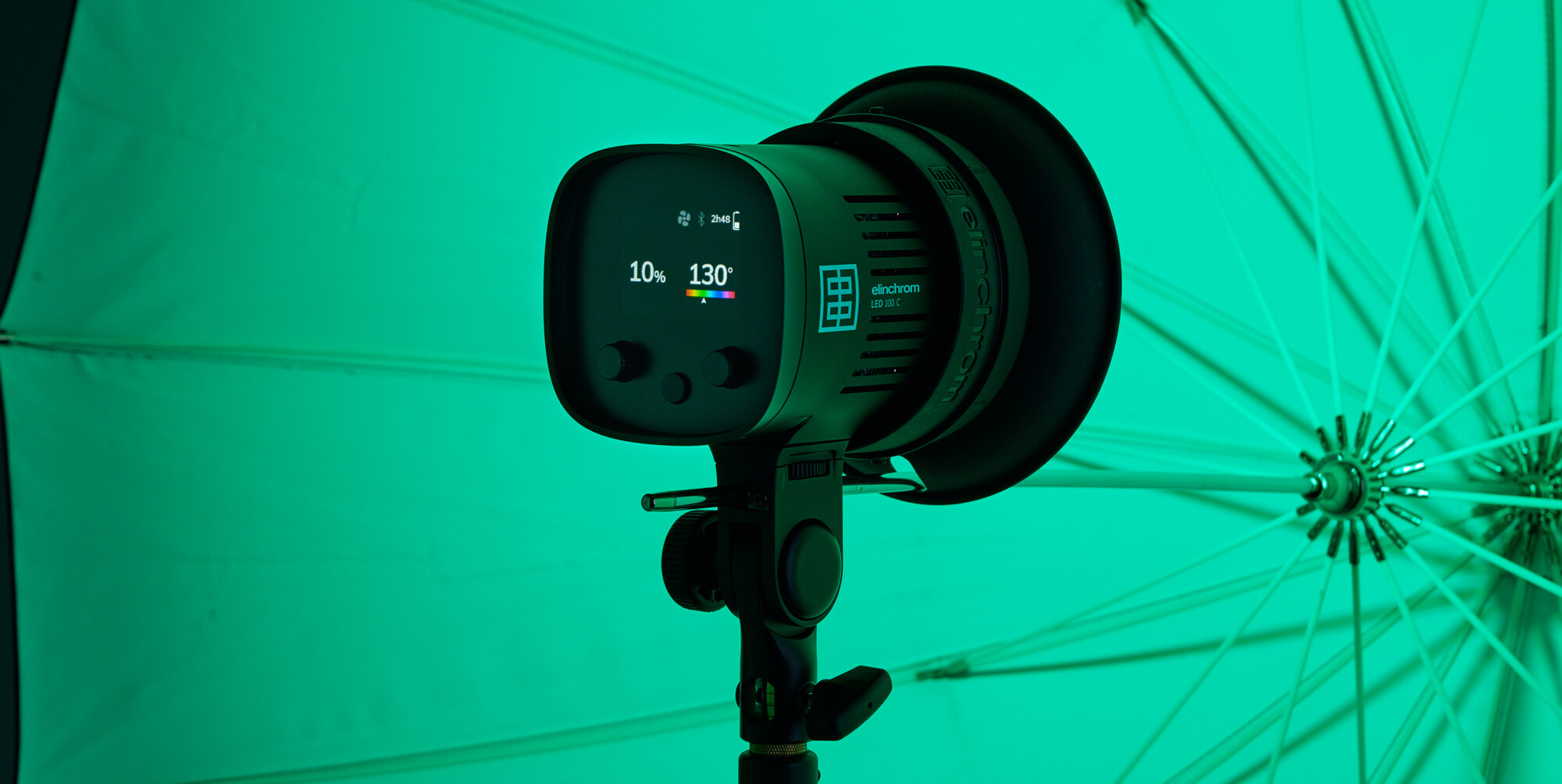
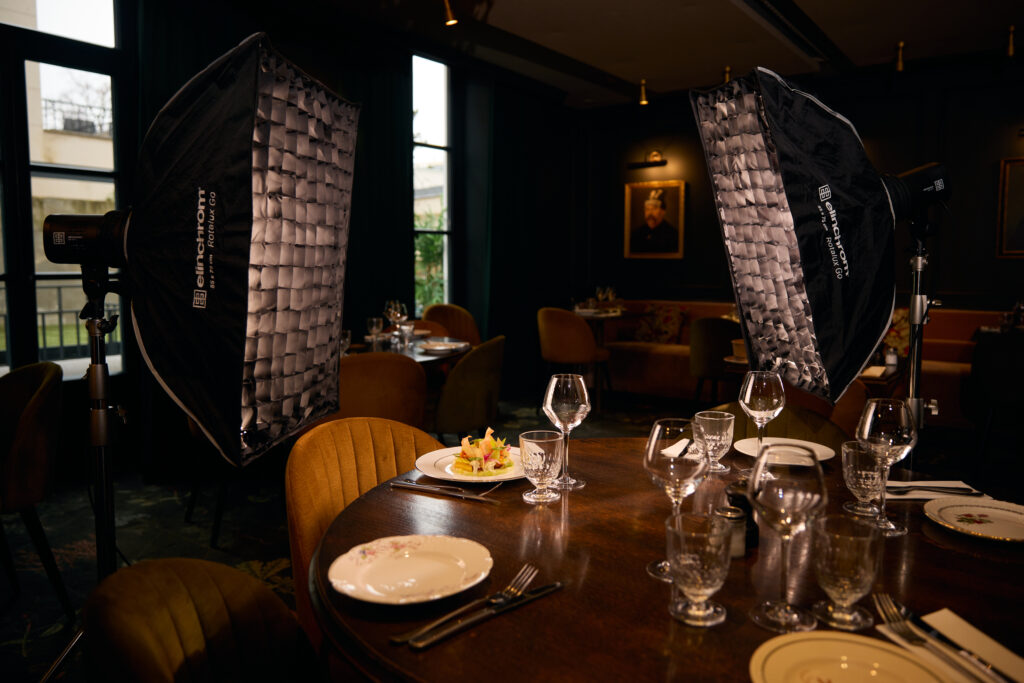
The LED 100 C is the perfect continuous light accessory for Elinchrom and Profoto users who need an LED solution that integrates effortlessly into their workflow. Whether used on its own or in combination with flash, it expands creative possibilities, making it an essential tool for professionals and aspiring creators alike.
With the launch of the LED 100 C, Elinchrom is stepping into a new era of lighting, one where continuous and flash lighting work seamlessly together to provide photographers and creators with the most versatile tools possible.
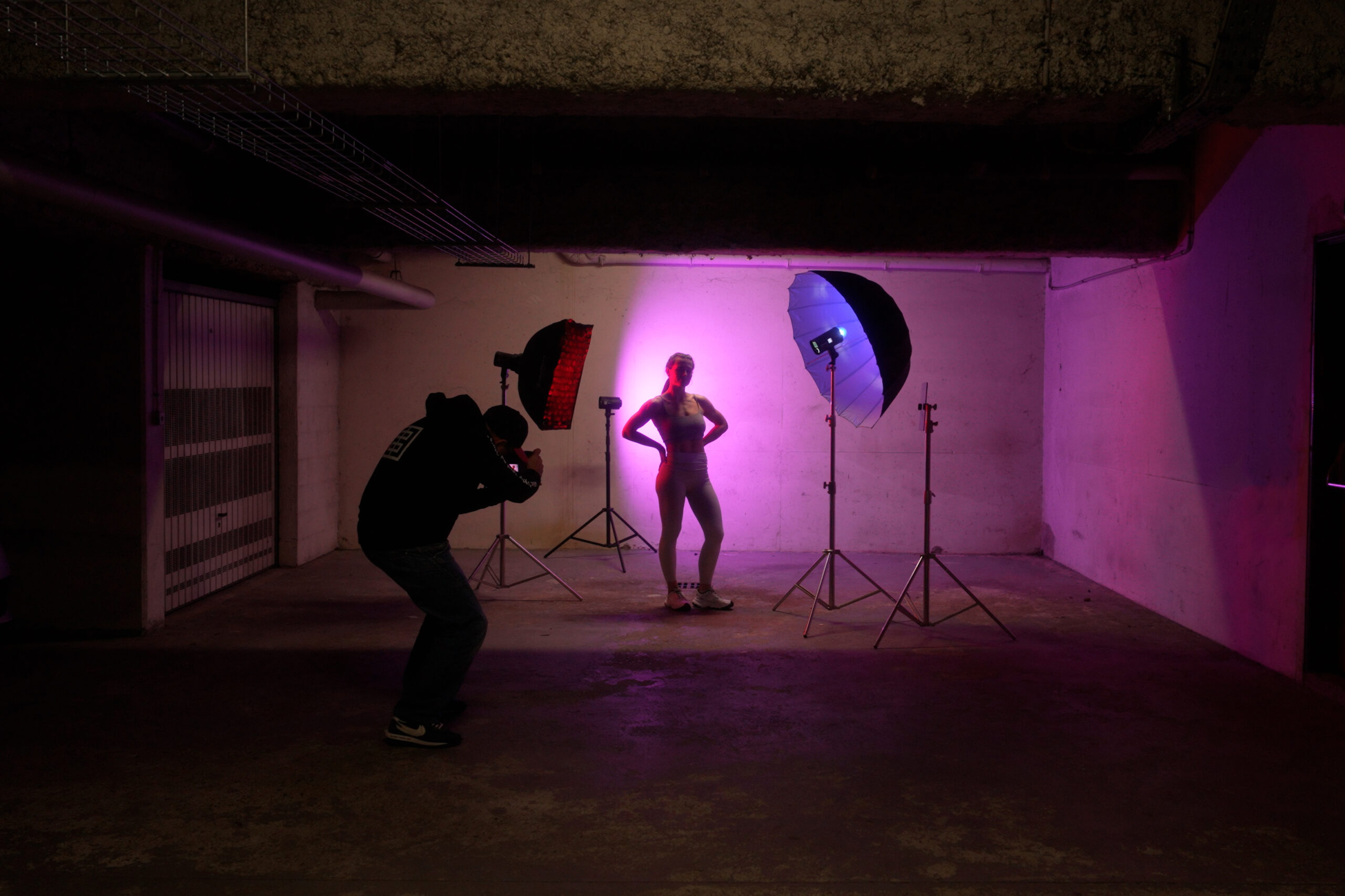
Anthony Passant
Anthony Passant has been a French portrait photographer for over a decade and an Elinchrom user since the beginning of his career. A passionate and self-taught photographer, he embraced flash photography for its creative potential and its ability to transform a room, enhance a face, or set a specific mood
“We chose to collaborate with Anthony Passant because he perfectly represents the modern photographer’s reality—balancing both still and video content creation. We knew that the LED 100 C, with its set of features, would integrate seamlessly into his existing setups. I am confident that many photographers will see it as a valuable addition to their toolkit” adds Simon Whittle.
Elinchrom embarks on a new adventure with the launch of the LED 100 C Elinchrom, a leader in professional lighting solutions for over 60 years, proudly introduces the LED 100 C, its first-ever continuous light. Designed to meet the evolving needs of photographers, videographers, and content creators, the LED 100 C delivers professional-grade performance in […]
Monkey Business
The Photo Ark, an ambitious project led by National Geographic photographer Joel Sartore, aims to document every species in human care, highlighting the beauty and fragility of the natural world. At the heart of the project is a reliance on cutting-edge tools, including lighting solutions from Elinchrom, which enable Sartore to capture these creatures in stunning detail, even in the most challenging environments.
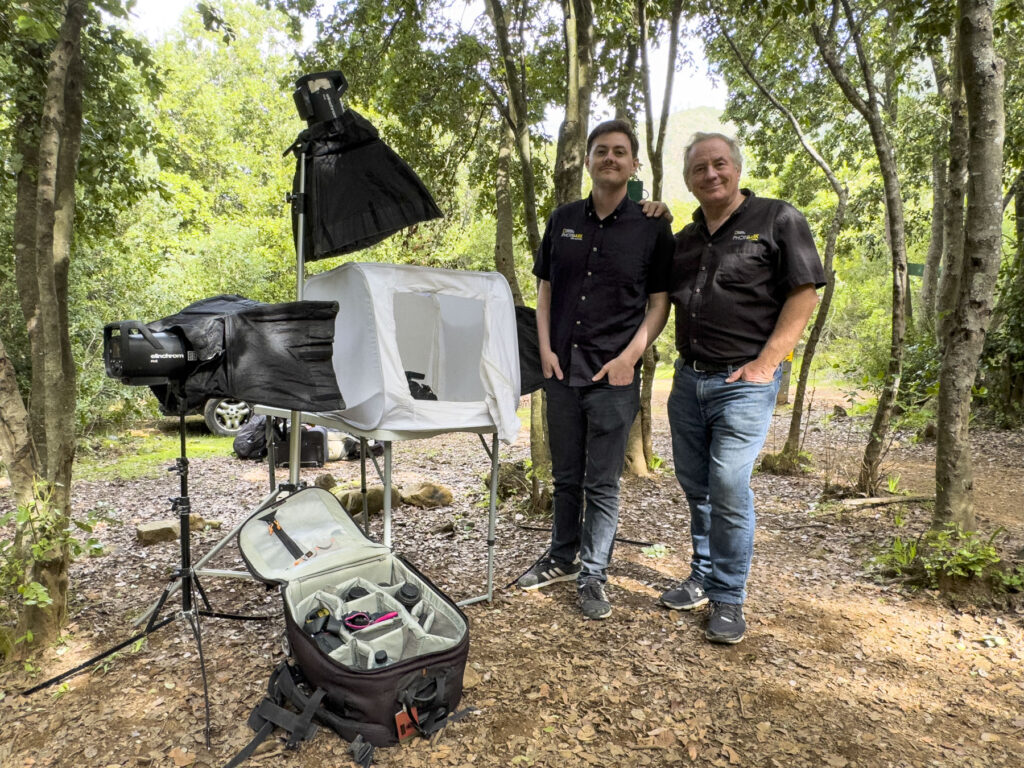
It took two full days to fly from Omaha to Atlanta to Lima to Huanuco, Peru, then a big drive up and over the Andes in an SUV that was excessively small for our luggage.
Son Cole and I were here for the Photo Ark, and our goal was to reach a little jungle town that was home to the world’s only captive, yellow-tailed woolly monkey, a species thought extinct for more than 100 years. Now rediscovered, it was to be the jewel in the crown of the entire trip.
We arrived in the dark to an empty lodge set way back in the forest. Most of it was open air, including the guest rooms. I did not see any guests except a wild howler monkey asleep on a couch in the lobby. A three-toed sloth hung from the ceiling over him. Our room was hot but at least there was a fan and a screen on the window. Sunrise would be at 6am, breakfast at 7, monkey shooting by 8. Or so we thought.
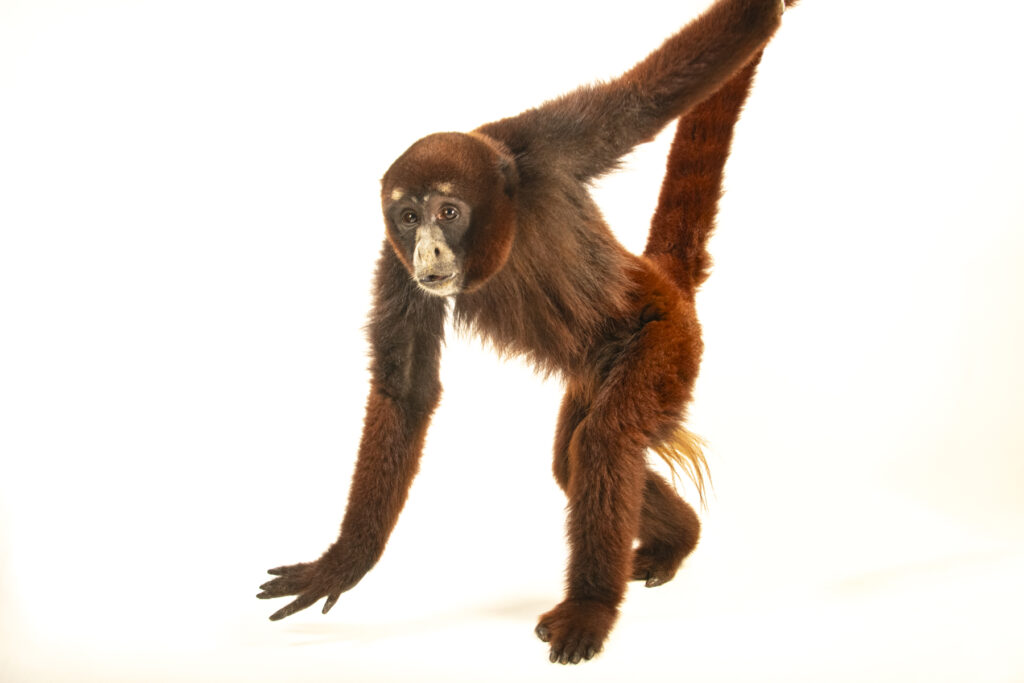
By dawn, the sloth was in the same place, but the howler monkey had moved to a padded chair at the reception desk. Howlers are notoriously laid-back, not moving much until a couple hours after sunrise. I shot close ups with my I-phone as he stared blankly at me. He was obviously not a morning person.
Promptly at eight, Hugo the Monkey Man showed up. He walked us towards some empty buildings, staying on an elevated concrete walk at all times because bushmasters (venomous snakes) could be hiding anywhere in the thick leaves on the ground. At the end of the walk was the shell of a concrete house with floor-to-ceiling enclosures inside made of cyclone fencing, the remains of a once vibrant wildlife rehab center.
There, in the back of the living room, was THE monkey, up near the ceiling and swaying back and forth, checking us out. In the space next to us were two macaws and a handful of Amazon parrots, mostly just screeching, but with the occasional Spanish phrase tossed in. We put in our earplugs and began to build our lighting set up: four Elinchrom FIVE, battery-powered and perfect for a building with no electricity.
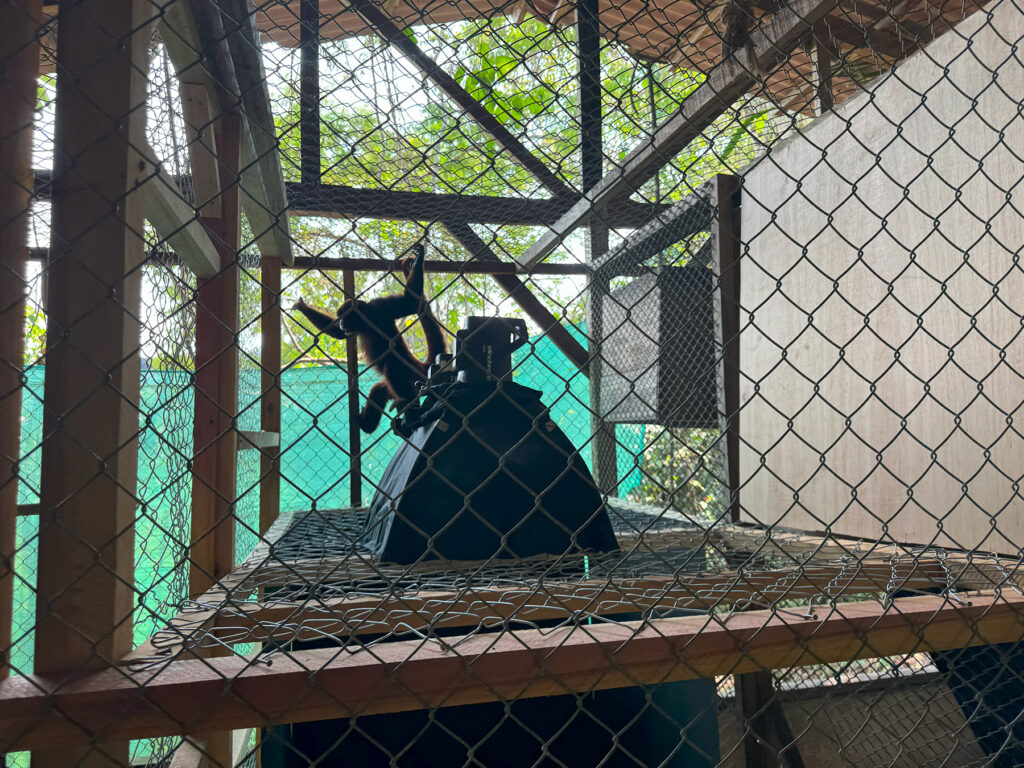
As we worked, Monkey Man told us his story. When the center closed at the start of the Pandemic, everything stopped here. Funding dwindled for food and maintenance. He let every animal go free that could make it in the wild, which left him with just a few non-releasable primates, birds and a handful of bears.
Soon things began to deteriorate, as if the jungle wanted it all back. He worked constantly to cut vegetation out of pens, haul water, and mend fencing. He began to spend his own savings on the food needed to keep all the remaining animals alive. Somehow, they made it through, though funding is still scarce.
Once our lights were set up in a protected space over the set as he called gently to the monkey to come on over. A bit of fruit tossed inside sweetened the deal, and the monkey eventually went in, but our shoot was not to be. Not yet at least.
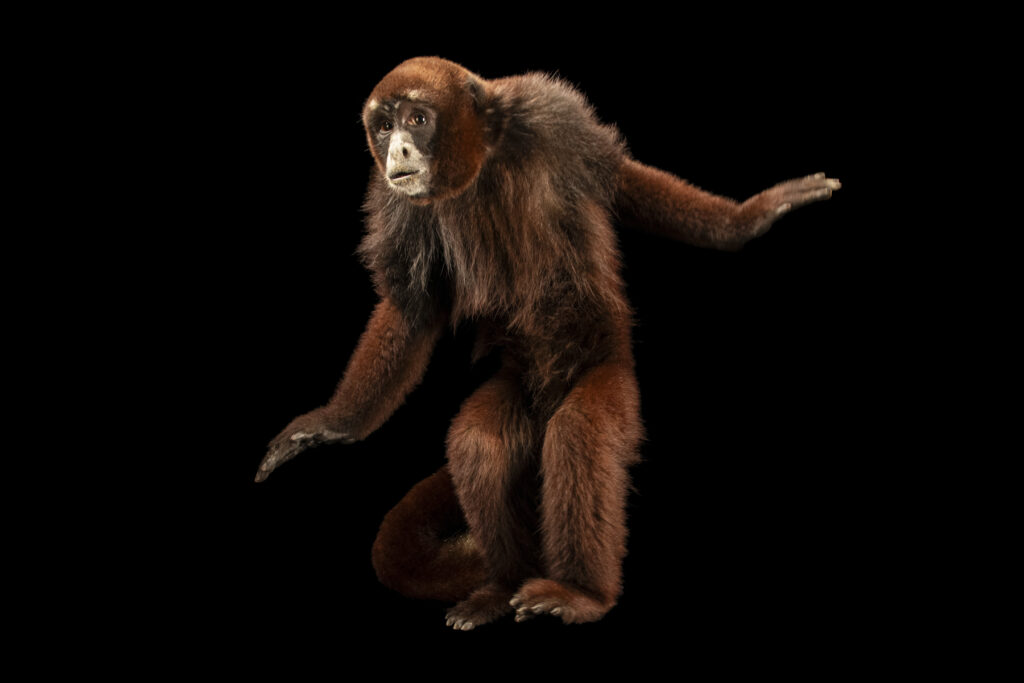
Instead of posing nicely, the primate promptly went into a corner, curled up and stayed there. For an hour. I eventually backed away and set my camera down, hoping he’d relax. A few minutes later Cole yelled, ‘He’s getting out!’ I spun around and knocked my camera off a bag, where it fell to the floor, landing lens-down and shattering the lens filter.
Eventually the creature shifted back into his normal enclosure, away from my light. I borrowed a hacksaw and began to cut the shattered filter off the front of my lens.
Thankfully, no lights were broken, but clearly, we needed to switch to our Plan B; a heavy wire dog kennel that we brought as a backup. We put the kennel into the larger enclosure, the curious monkey entered right away, and we finally got to work, some three hours after we had started.
Once inside our shooting kennel, we got stills and video of the monkey on black and white within an hour, mission accomplished. It was a huge relief, as this was the species we built our entire trip around.
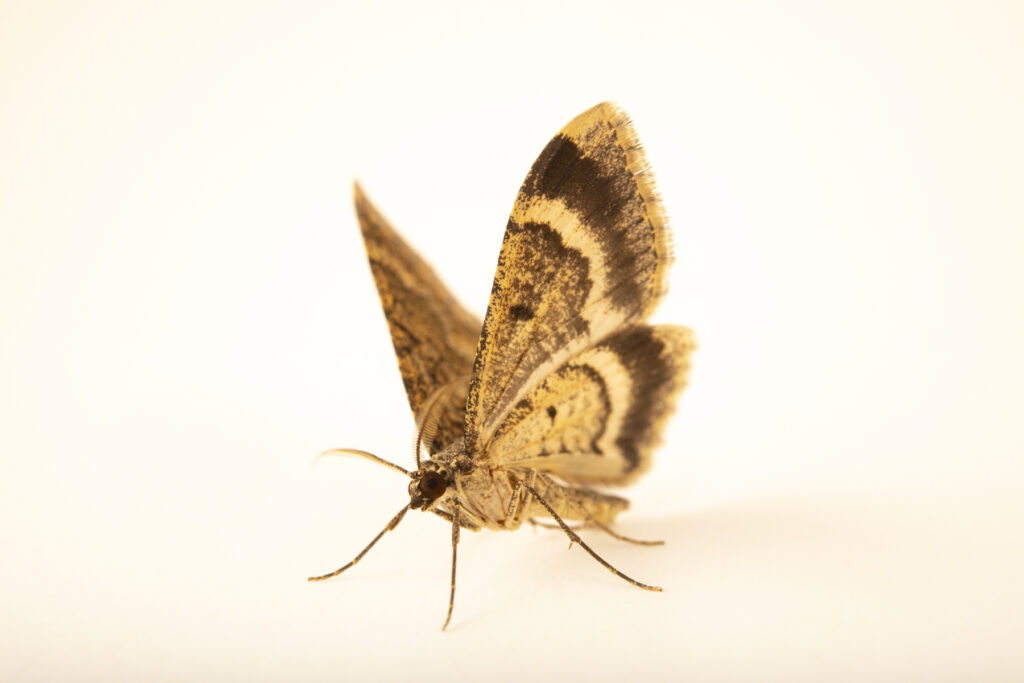
We loaded our gear, said bye to the lodge’s howler monkey (still lounging) and drove back up and over the Andes, back to the nearest city with an airport, some four hours away. Cole found a moth in the airport bathroom, which he caught in the small plastic container I use for holding my radio triggers, doubling our species count to two. We photographed the moth and let it go. We moved around daily after that, going to nine other locations within Peru, seeking out mammals, birds, amphibians, reptiles, fish and invertebrates. Our fixer/translator Rocio had scouted most locations before our arrival, and knew which species we could photograph at each place.
In Iquitos we got a saki monkey, a South American coati, a giant otter and a Nancy Ma’s night monkey. In Arequipa it was a Guayaquil squirrel and an Amazonian giant centipede, a species so venomous that a five-second bite will leave you in howling pain for weeks. I photographed it in the bottom of a five-gallon black bucket, too slippery for him to climb out. Better safe than screaming, I always say.
no images were found
In Lima, we got a yellow-legged honeycreeper, a redheaded barbet, and several Lake Titicaca frogs saved from being chopped up and made into mixed drinks at a nightclub. Some bar patrons believe that putting a rare frog into a blender, then chugging the results, will lead to health benefits. It’s not true, and it’s abhorrent. However, thanks to a confiscation by the Peruvian government, all were safe now at the Huachipa Zoo.We also photographed another confiscated animal, a red uakari monkey. Called ‘The Old Man of the Forest’ for how they look, this one was just a baby that had been rescued from the pet trade, and was being raised by a wildlife rehabber. It spent part of each day either playing in her hair, or snuggled in a beach towel slung over her shoulder. As long as she could hang with her adopted mom, she would thrive.
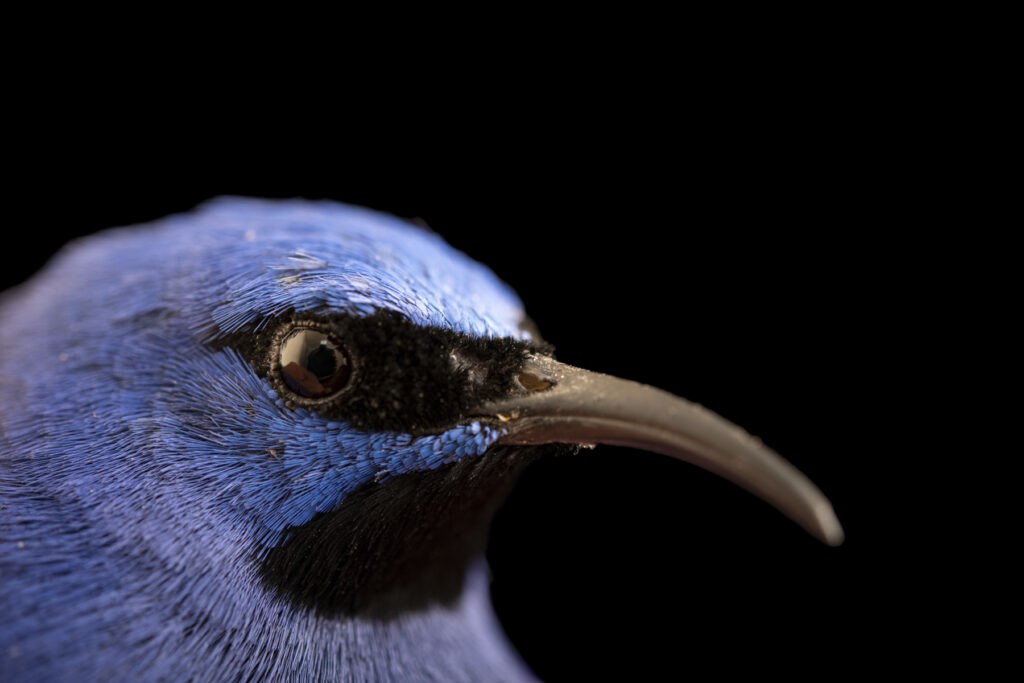
Oddly, of all we experienced, the hardest part of the trip was flying home. For three nights in a row, our long-haul flights from South America to Atlanta were canceled due to mechanical issues. Plane #1 had a fuel leak that stunk up the cabin. The next night, plane #2 had a broken wing piece. Plane #3 had sparks shoot out of the engine on push back.
The bottom line is, no matter where on Earth you go, travel is hard work. So we accept the bumps in the road as a given, and move forward. After all, working on the Photo Ark is an honor and a privilege. Plus it’s never boring. Moreover, I’m thankful to be grant-funded by National Geographic, and for Elinchrom’s support as well.
Where to next?
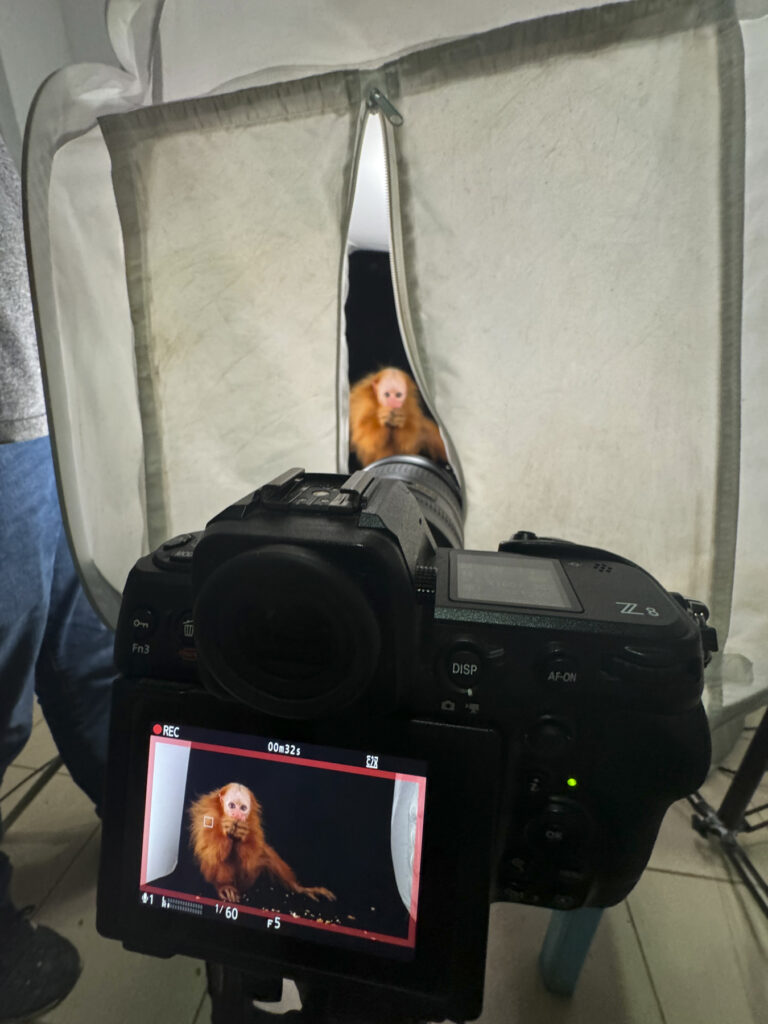
Monkey Business The Photo Ark, an ambitious project led by National Geographic photographer Joel Sartore, aims to document every species in human care, highlighting the beauty and fragility of the natural world. At the heart of the project is a reliance on cutting-edge tools, including lighting solutions from Elinchrom, which enable Sartore to capture these […]
The Adventure Bike Festival UK
I had barely been home a few days following my journey through the Alps, when it was time for the ABR festival at Ragley Hall in the UK. I was shooting for a couple of clients, and hosting Peak Designs stand for product advice for bikers. Four days of adventure bikes, plenty of networking, and great weather.
Two YouTube adventure riders Leonoor and Runa were there too, promoting brands. I had missed Leonoor by 24 hours when passing through the Tirol part of the Alps during the first leg of my adventure, so we made plans to finally organise an adventure photo shoot, for a week or so, while they were touring the UK. We managed to shoot a few dark and moody portraits for their promotional materials.
No sooner had I returned from the festival than Auto Hebdo (a French motorsport magazine, I’ve worked with before) called—they needed a photographer for an interview at Red Bull Racing in Milton Keynes. It was a quick job, just a few hours, capturing Pierre Wache, the technical director of Red Bull Racing F1, during a carpool-style interview.
Upon arrival, there was no time to unpack. I quickly grabbed the Elinchrom THREE for a bare-bulb style shot with the included diffuser, and we took a shot surrounded by the F1 collection of cars, and then we jumped in the car. Since Pierre could find flash distracting while driving, I captured as much as possible without it. We visited the secret wind tunnel test centre for a quick outdoor shot with the flash despite the rain, then returned to headquarters for a few more portraits before Pierre was whisked away. The whole shoot was probably around 45mins!
As we were leaving, we managed a couple of portraits of Formula 2 driver Isack Hadjar by an F1 car mounted in a glass box. The tight space made lighting tricky, but the THREE handled it well.
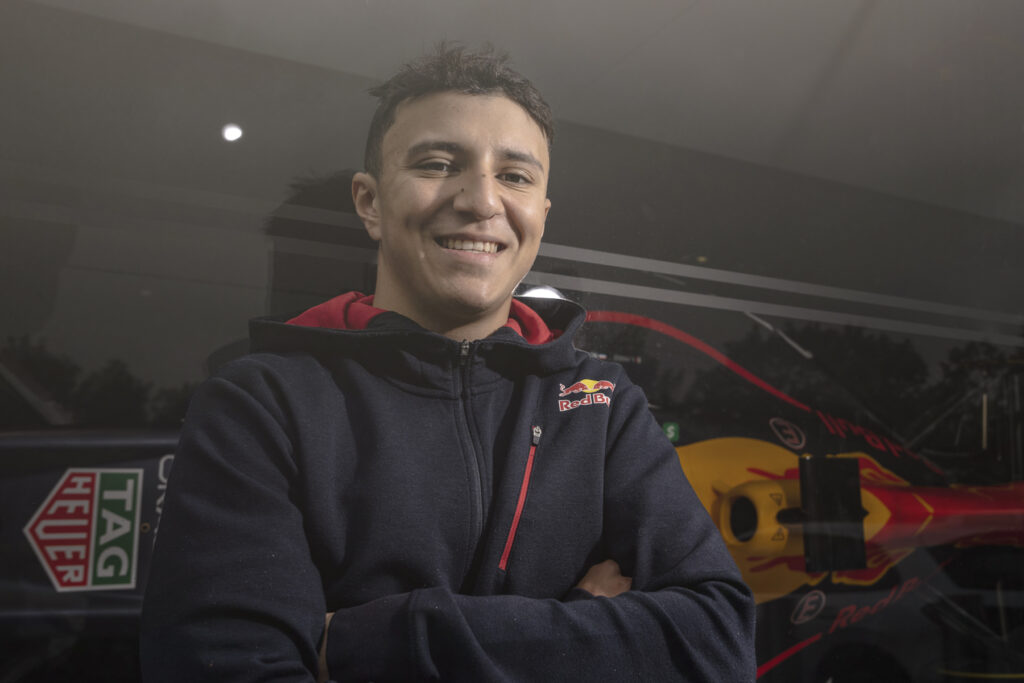
As we wrapped up, the journalist asked about my weekend plans. When I mentioned I was trying to take a weekend break, he informed me I’d be shooting F1 at Silverstone instead. Naturally, F1 takes priority, so I headed home to repack, charge everything, and prepare for the weekend at Silverstone.
Silverstone F1
I arrived at Silverstone with enough time to sort out my passes and scope out the track. Thankfully, I know Silverstone well. I scanned the red zones and checked the timetable. This was my first F1 event, and hopefully not my last! I quickly realised that I’d have to shoot fast and have a bit of a plan. Unlike endurance racing, where you have 6 to 24 hours, F1 sessions are short — the race itself is only 1.5 hours maximum.
The next day was a crash course in all things F1. I spent most of the day on track action, with no flash required. I realized I could carry the flash unit in a waist-mounted pouch where I normally carry spare lenses, the 300mm pouch from Think tank fits the ONE or THREE.
Race day arrived, and I got some tips from regular photographers on must-see moments, and places to shoot from. Flash use was limited, but I kept it on hand just in case. I hit the grid, capturing drivers preparing, then sprinted to my chosen track spot for the start. I shot from five different track sections, getting a variety of angles.
After the race, I headed to the podium early to secure a good spot before the area filled with photographers, fans, TV crews, and journalists. I captured some great shots of Lewis celebrating his win before heading out of the circuit, beating the crowd.
Goodwood FOS
As I was downloading images from Silverstone, Sony called, asking me to work at the Goodwood Festival of Speed. They wanted me to advise photographers on their cameras and lenses. I also arranged a quick photoshoot with endurance race driver Gabriel Aubry. Anticipating a fast shoot, I packed light, throwing the flash in my 45L backpack with other gear, and planned to capture some arty shots from the paddocks for potential posters.
Using the 18 cm reflector and grid, I controlled the light in the harsh sun. After photographing interesting race car parts, I met Gabriel for some cool portraits before his Hillclimb run. The flash drew some attention, and others were amazed by its power. When I showed them the images, they couldn’t believe they were taken on location in bright daylight — they look like studio shots.
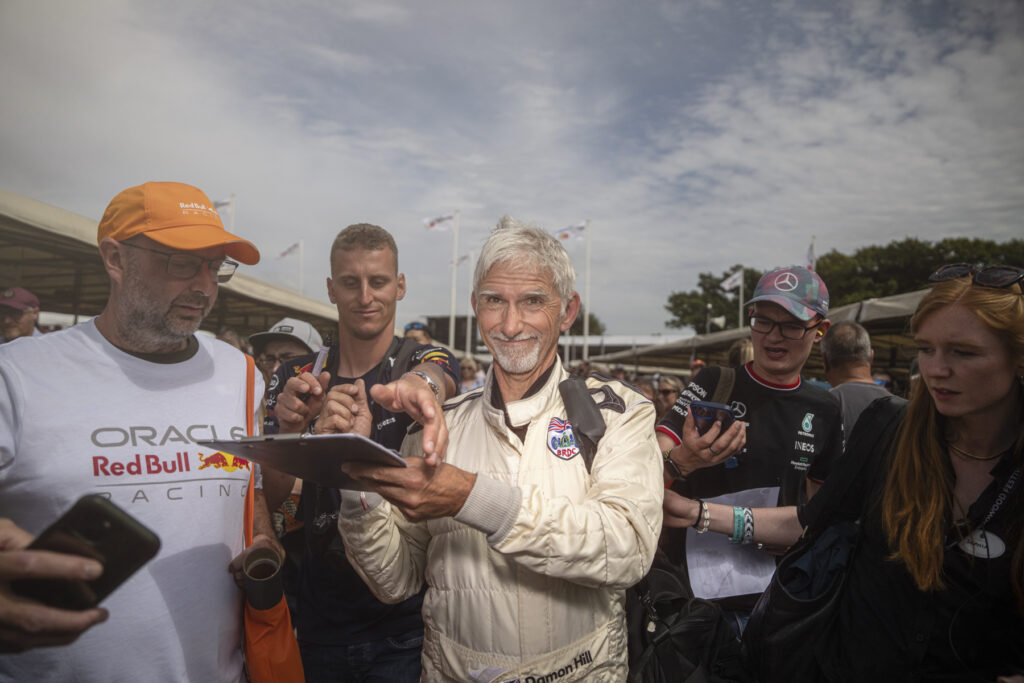
Walking back through the paddock, I spotted F1 champion Damon Hill signing autographs. I used the THREE like a large speedlight and captured a great shot of him with fans, along with a few other faces, before returning to the Media center.
Up next was the red arrows and Drift cars! I am sure you could do this with lighting but it would have been difficult and possibly distracting.
The THREE really works straight out of the bag, You can use it with all the careful planning of a studio environment, but I find the THREE is perfect for the times when there is no plan, just an idea, or for that spur of the moment shot when no one has time, the only delay in firing that shot is pulling the flash out of the bag, putting the trigger on the camera, and turning both units on. I prefer full manual, but TTL is there if you want. The size and weight means you can carry in a bag easily all day, and I found walking with it in my hand is just as easier. I haven’t found any reason not to carry the THREE, it’s a bag essential.
Next month, I will take you back to bikes, still using the THREE as my main flash gear…
The Adventure Bike Festival UK I had barely been home a few days following my journey through the Alps, when it was time for the ABR festival at Ragley Hall in the UK. I was shooting for a couple of clients, and hosting Peak Designs stand for product advice for bikers. Four days of adventure bikes, […]
Having used Elinchrom lighting for over a decade, I knew the quality they deliver. So, I was really excited to try the new Elinchrom THREE light. With its sleek design and improved performance, this light seems like a game-changer and I was thrilled when the THREE twin pack arrived just in time for my road trip to Senigallia, Italy.

The OG Plan
The journey would start in the UK, crossing the Channel into France, through the Alps, and into Italy along the West Coast. In Senigallia, I would meet up with Harley Davidson for the Hogg Rally. I knew reliable lighting would be essential.
After the Hogg Rally, I was commissioned to fly to Paris to photograph VIPs at the Le Mans 24-hour race. Once finished, I’d return to Senigallia, retrieve my van, complete a few more shoots, and head back to the UK via the Dolomites.
When Plans Go Awry
As it often happens, things began to unravel before we even left. A last-minute, urgent shoot for a client’s new go-kart track popped up, delaying us further. Photographing the go-karts was straight forward, but making them look thrilling for their website was the challenge.

Racing through the Alps to Italy, we paused at a small, cold café, where we met Simone, an elderly woman in traditional Alpine attire. She shared stories of Hannibal, Napoleon, World War II, and the Roman Empire, speaking as if she’d lived through them all. I couldn’t resist asking for a photo, and she kindly obliged, though I didn’t dare use a flash. Another long drive, and we finally reached Senigallia.
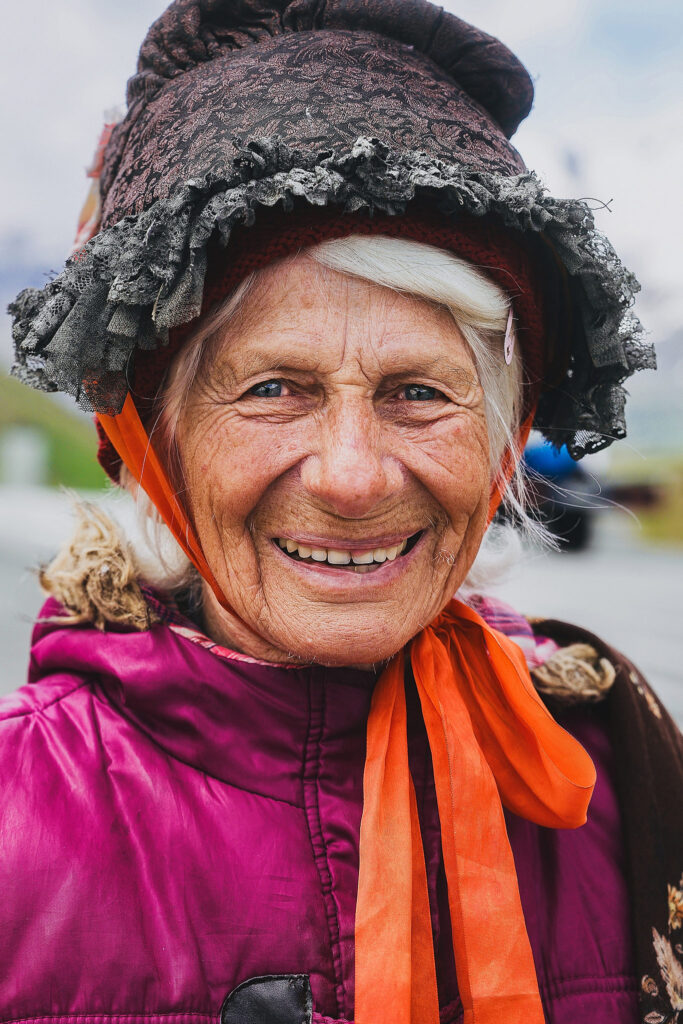
Harley Davidson
My family flew home, and my first shoot began: a VIP ride-out with Karen Davidson and a some Harley riders. I jumped into work mode, taking my usual spot, facing backward on the lead motorcycle, gripping a small bar with my legs leaving both hands free for my cameras. Unfortunately, there was no time to rig for a flash, that challenge remains for another day and a problem I’m still brainstorming. We spent the day riding along the beautiful Senigallia coastline, weaving through picturesque villages, capturing the essence of the event.
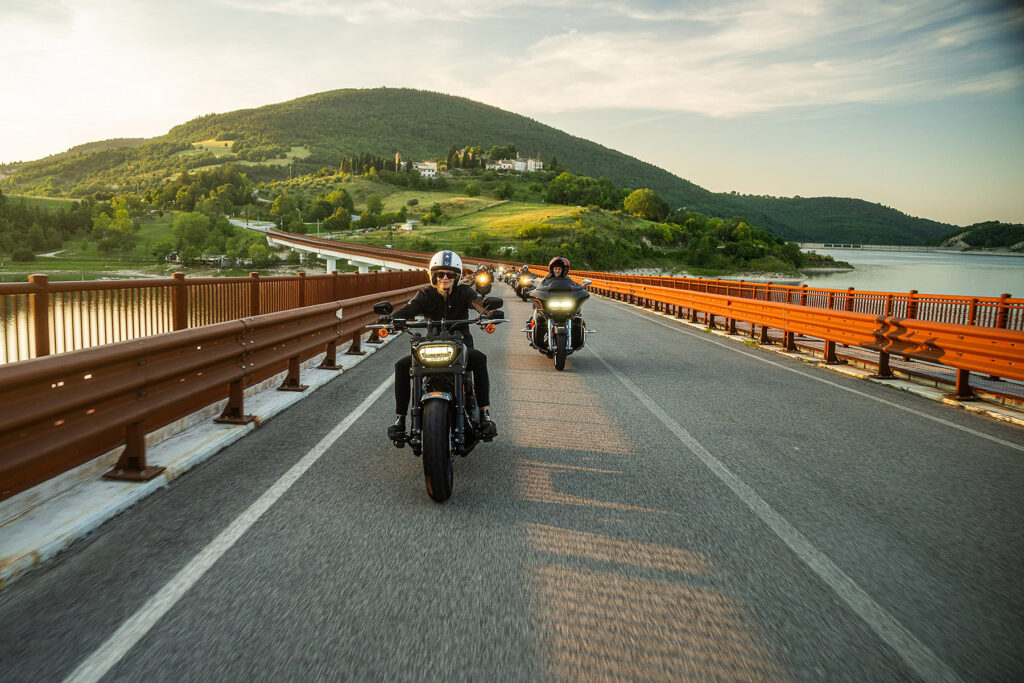
One of the most intense shoots was capturing content from the Wall of Death—a thrilling, gravity-defying motorcycle act. David, the man in charge, insisted I watch the show before collaborating. From the top, I peered down into the massive circular structure—the show was mind-blowing, and I was instantly hooked. After discussing ideas with David, I regrouped before returning that evening with the Elinchrom THREE flash.
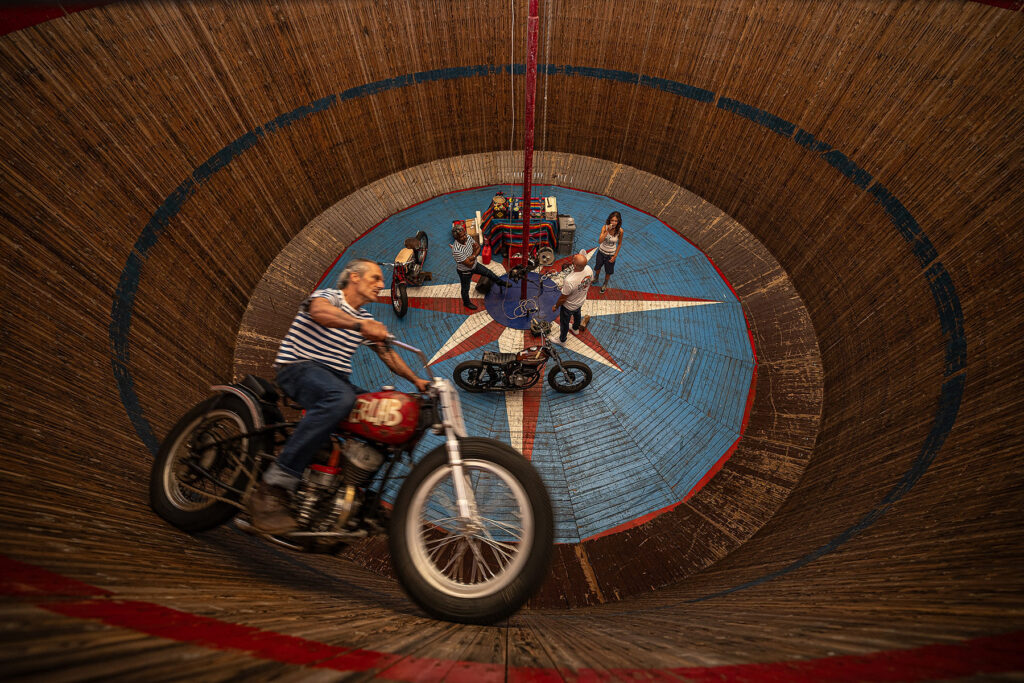
The arena was packed, so I placed the THREE on the central table to light up the space while David performed. My colleague watched from above, but I stayed inside the arena with the bikes. Using a clip board as a make shift flag, I created even lighting with the diffuser dome, while shielding myself from flare.
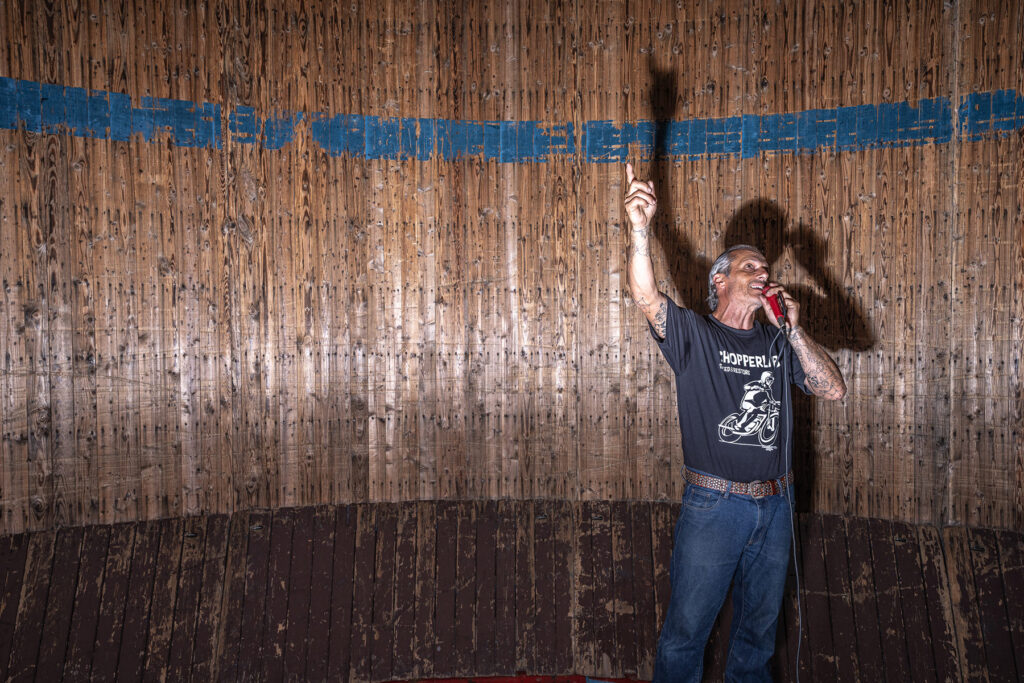
As the show began, an uneasy “Final Destination” vibe set in. David’s bike repeatedly failed to start, raising tension. Finally, they realized it needed fuel, spilling some during refuelling, which left me concerned. After a few sputters, the bike roared to life, and everyone sighed in relief.
The show resumed as David circled the wall, climbing higher with each lap. I captured the dramatic scene with the flash lighting up the dark arena, adrenaline pumping as I shot each pass. After his act, I turned off the flash to avoid blinding the next rider.
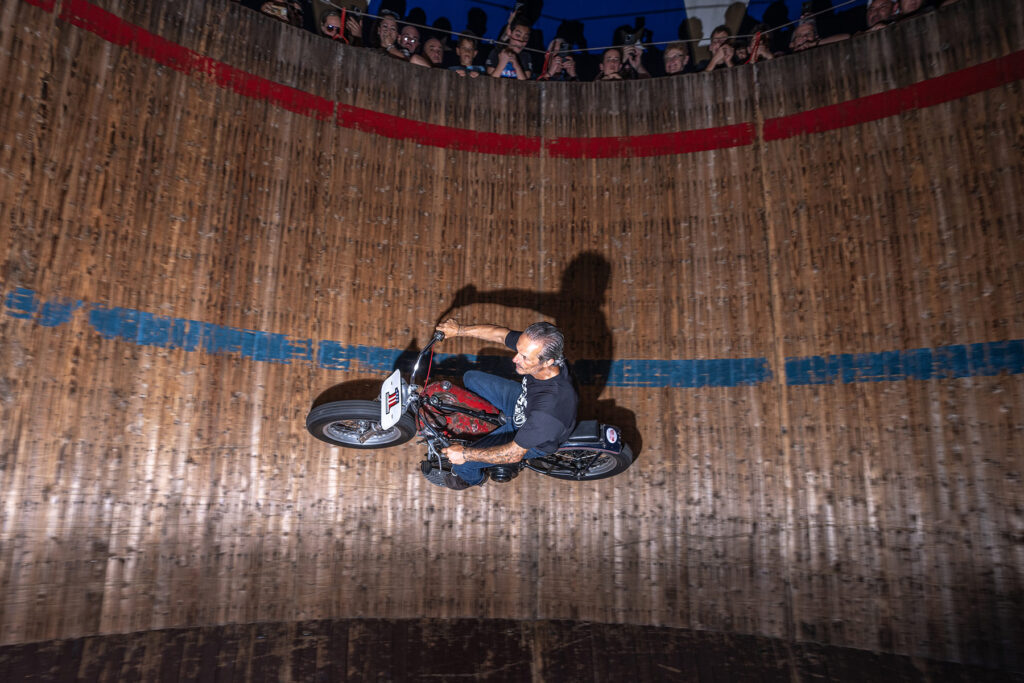
While the next performer took over, I was chatting with David when, suddenly, he was struck by the other rider’s bike, falling hard onto the floor. For a moment, I thought it was part of the act, but the screams of his 13-year-old daughter proved otherwise.
The medical team arrived quickly, taking David to the hospital. Later that night, we returned and learned David had a concussion and minor injuries but would fully recover. Thankfully, David was okay, but the close call left everyone shaken and grateful it wasn’t worse.
Custom Bike Show
Then came the Harley Davidson custom bike show. I used heavy diffusion filters to soften the light on the chrome and added subtle flash to enhance the sparkle. The Elinchrom THREE flash was perfect—its power and portability made it easy to capture the intricate details of these custom bikes all day.
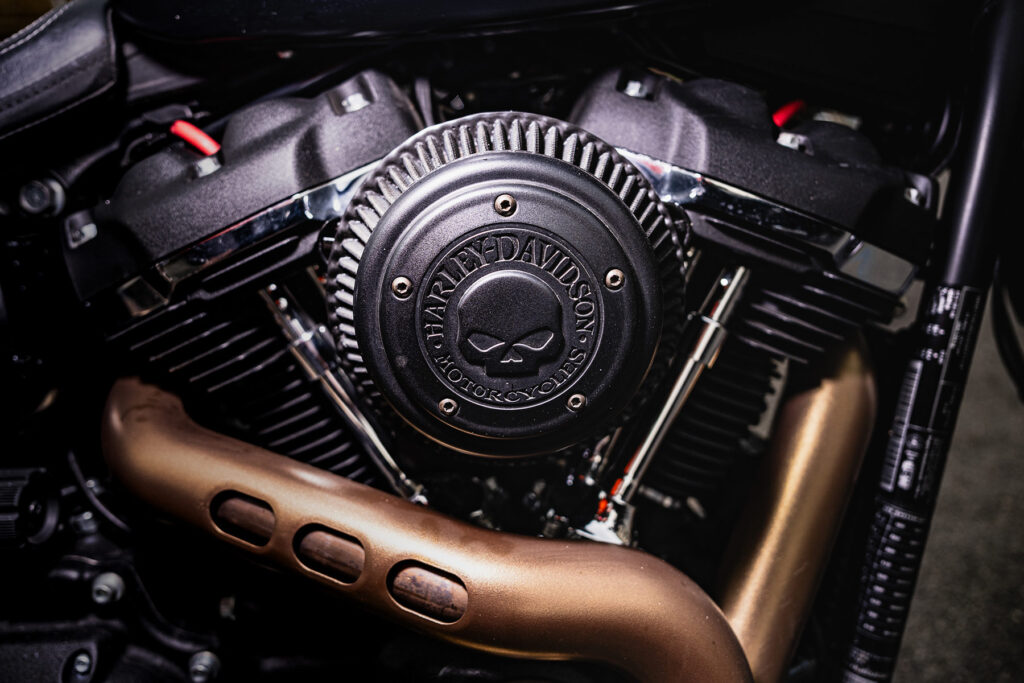
Faces
Throughout the event, I sought out interesting faces with character. The THREE made it easy to capture detailed portraits, even in bright sun. Using the basic 18cm reflector with a grid or a simple soft diffuser dome, I created dynamic images with minimal effort. The THREE’s versatile mounting system was excellent, and easy to hold, though a dedicated hand grip would be a nice future addition.
A fellow Elinchrom ambassador suggested trying a 21 cm reflector with a 3-grid set for wider light. I was also wondering if a soft white interior instead of silver would give better results. While strip boxes seemed too large for my needs, the 26 cm high-powered reflector and 40 cm maxi, with added diffusion, have been incredibly versatile.
I wrapped up with a few final shots. With the weekend ending the team headed home. Leaving me in Italy for few days of editing.
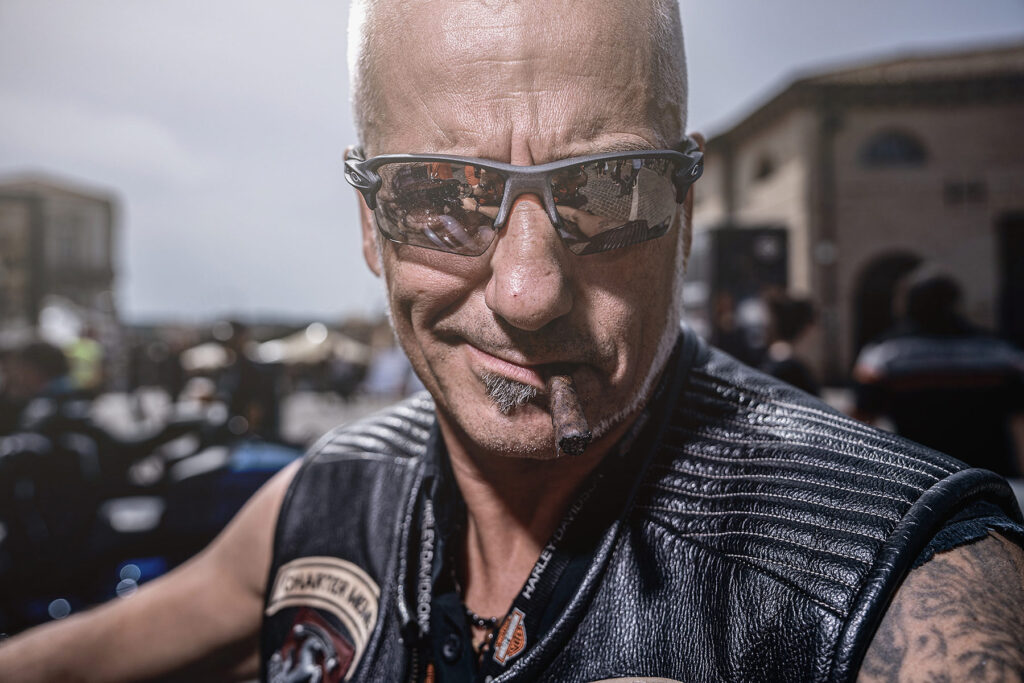
Le Mans 24-hour race
A few days later, I flew from Italy to France. The THREE is flight safe so no delays there.
The following days were a blur at the Le Mans 24-hour race, capturing the VIP experience—from check-ins and presentations to exclusive meals.
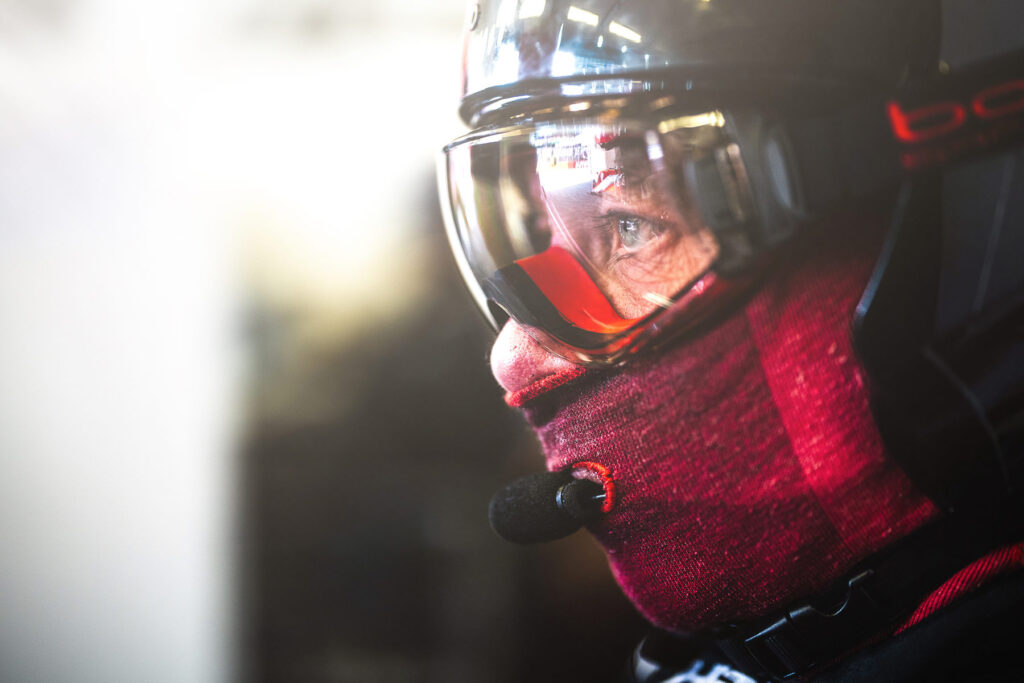
At Le Mans, I hit the grid for some VIP shots before they dispersed into the crowd. My team was knocked out of the race early but I still got some night action. After a late night, and barely any sleep, there was time to shoot the last race action. Next morning, it was a taxi, flight, and train back to Senigallia, where I’d left the van.
Back and Pack
The following morning, I left early, driving up the coast, passing through Italian villages and the Tyrol region. There were so many beautiful beaches and villages, as I got closer to the mountains, the landscape changed dramatically, with vineyards covering every inch of the valley.
I saw on the horizon, a massive mountain wall ahead. As I approached this wall, I looked for a mountain pass. The road climbed and zigzagged up, and I barely reached the top in time for sunset.
The drive home
Pushing on, I headed to Calais, caught the ferry just in time, passed out on a bench, waking up in the UK. Back at last.
Reflecting on the trip so far, many things didn’t go as planned. But the main shoots happened. The THREE was exceptional, all this on one charge! The battery life is incredible, and the units are so easy to travel with.
Having used Elinchrom lighting for over a decade, I knew the quality they deliver. So, I was really excited to try the new Elinchrom THREE light. With its sleek design and improved performance, this light seems like a game-changer and I was thrilled when the THREE twin pack arrived just in time for my road trip to […]
Recently I have been exploring the concept of creating photographs and not just being present for moments. A lot of the work I do is at the mercy of Mother Nature, you can plan all you want, but if it’s stormy instead of sunny, or vice versa you need to adapt and get an entirely different shot then originally intended.
For this shoot, I wanted to challenge myself and see if I could execute an idea regardless of what the weather was like.
The idea was to shoot trail running and create a series of images at night through a foggy forest. We could have waited for the fog to naturally occur and be just right, but since I wanted to control all the elements of the shoot, including the fog, I figured out a solution. Using a smoke machine with a generator and a leaf blower, we were able to disperse the fog throughout the woods. However, this still proved to be complicated, and my assistant Shane Roy operated this machine and moved throughout the forest all evening to make sure the fog dispersed properly.
The fog was the most unexpected part of the shoot as it was something I had never done and was the real question mark of how it would react, but when it came to the lighting, I was confident. I have lit scenes in fog before so I knew how the light was going to react, and had a plan of what I wanted the images to look like in the end.
For the main shot, I wanted the beams of light directed towards the camera creating shadows from the trees. To do this I set my Elinchrom ELB1200 back in the forest on a 12-foot lightstand and put an Elinchrom High Performance Reflector on it. This backlight illuminated the fog and created patches of light throughout the forest floor. Being that ELB1200 has so much available power there were no limitations on how far away I could set it, and still have enough light fill the forest.
The second light was my Elinchrom THREE with the Rotalux Deep Octa (100cm). I positioned this light high above the camera and feathered it upwards so it would not create spill on the ground. In addition, I added a Rotagrid to further control the direction of light without affecting the light properties of the Octa. The power setting was low to fill the shadows and add a bit of light to the runner without overpowering the backlight.
Almost immediately, we realized neither of these lights were positioned well for actually seeing where to run. We set up an Elinchrom ONE with the bare bulb and turned on the modelling light. By setting this flash to a different group, it would not fire when shooting, but illuminated the trail.
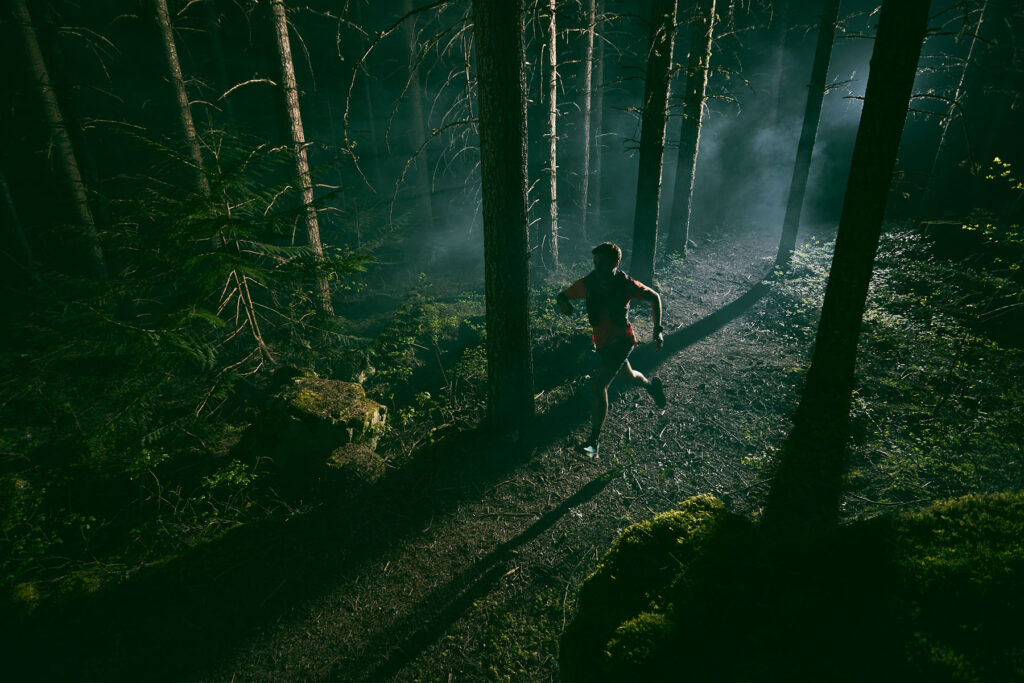
Once the position of the lights was set we started to shoot. The talent for the shoot was Guy Fattal, a talented photographer, and a trail runner. As a photographer himself, we were able to communicate easily and focus on timing the exact moment.
Since we were shooting at night there was hardly any light, so I did not need to rely on High Speed Sync to overpower the ambient light. Using the fast flash duration available in Action Mode on the THREE I was able to freeze the action and still shoot everything below the sync speed of my camera. The option of having both HSS and Action Mode on the THREE is convenient and allows for being better prepared for any situation, without needing to bring additional gear.
The ELB 1200 as the backlight had the Pro Head, which allows for a faster flash duration then the HS head, but since this was my backlight, I was not relying on it to freeze the action.
With the ease of communication with Guy, we were able to quickly get the running to look the way I wanted it to. Not being sure how the fog was going to react, I shot on a tripod so I would have the flexibility of capturing plates of various parts of the forest with fog and composite them in post. In the end, we were able to get the fog fully throughout the forest and capture everything as a single image.
I was shooting tethered to the computer so we could preview the images as I shot, and make sure the lighting and motion was exactly what I wanted. Mitch kept an eye on this while I was shooting, as the fog would move fast. When it was in the right position we would shoot a few running passes before spending the time reviewing the images.
Once we captured that first image, we moved onto the other scenes. The layout of the lights stayed the same throughout, the ELB 1200 as a backlight; the THREE was fill light and the ONE as a light for Guy to see. The one change was for the portrait I increased the power on the THREE, as I wanted less shadow on Guy’s face.

The post production on this shoot was relatively simple. A few small tweaks to get the final look and colour I wanted, but was able to get it pretty close right out of camera.
Everyone who worked on this shoot are all talented photographers in their own respect so it was fun to collaborate with them and get their input as we shot to get to the final images and I appreciate their help as I wouldn’t have been able to do it without them.
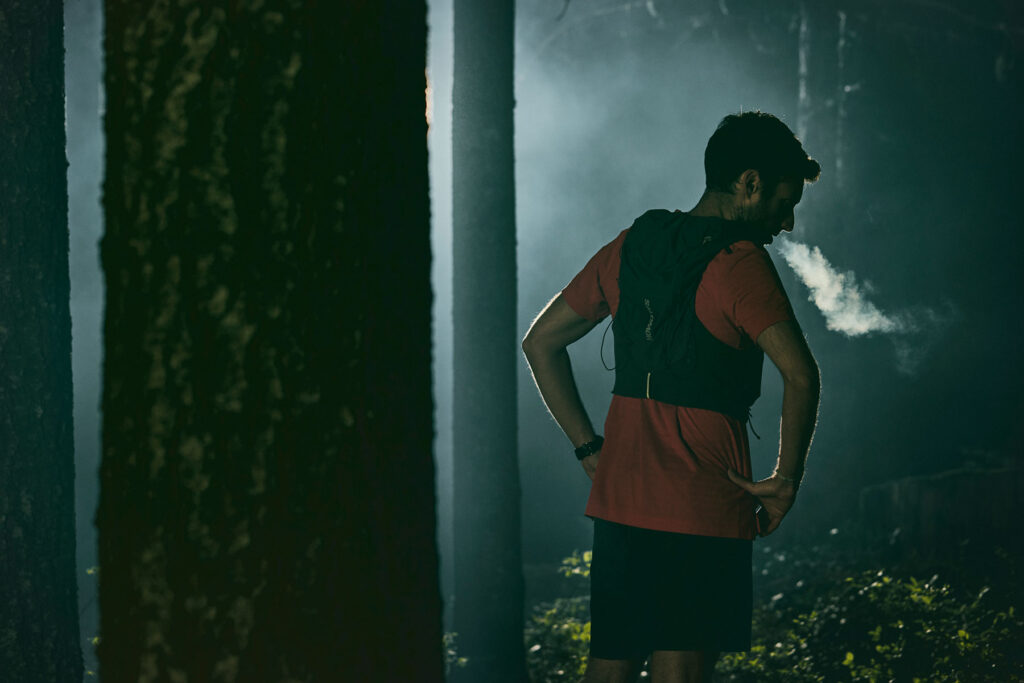
Recently I have been exploring the concept of creating photographs and not just being present for moments. A lot of the work I do is at the mercy of Mother Nature, you can plan all you want, but if it’s stormy instead of sunny, or vice versa you need to adapt and get an entirely […]
A two day drive from the nearest airport and pretty much as far as you can get from an ocean: my dream assignment – photograph a group of international geologists as they try to unravel the mysteries of a mass extinction around 365 million years ago. Three weeks of camping in the Altai-Gobi mountains, Mongolia, with a Rotalux Deep Octa and an ELB 500 TTL, both from Elinchrom, my camera and not much else.
While the Geologists got to work trying to figure out what made the majority of the ocean’s sea creatures go extinct, my assistant and I got to work on shooting them.
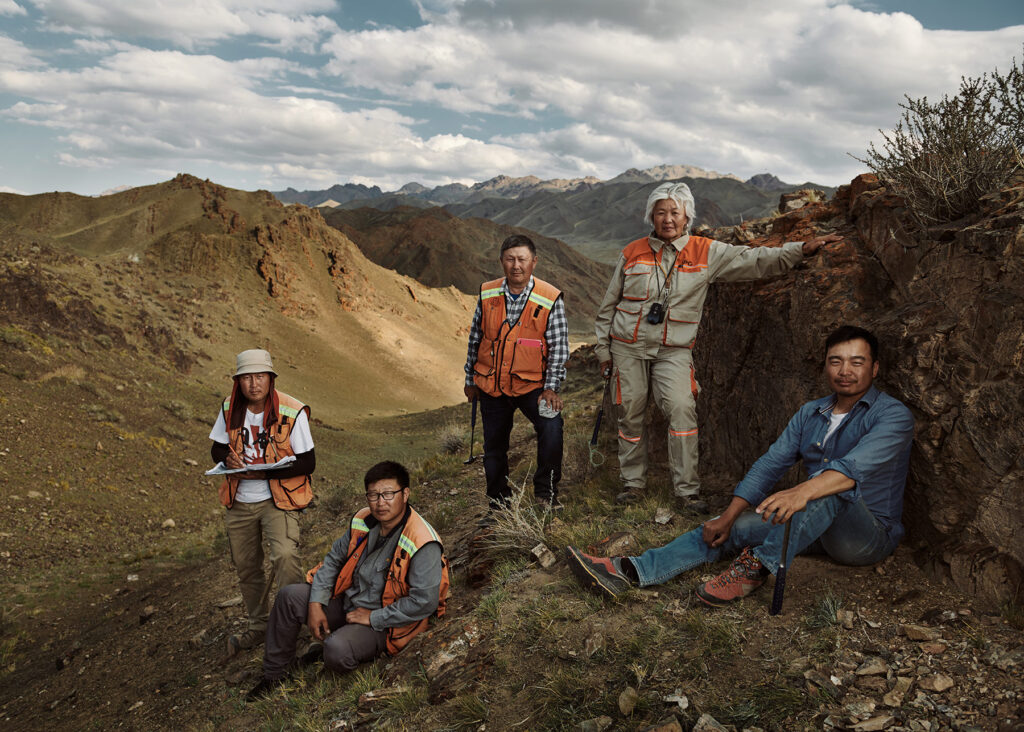
Restricted by airline luggage policies, I had chosen my most trusty pieces of equipment, for an extremely pared down setup, consisting of the light, the modifier, and a ‘stick’ (a light stand with the legs removed).
If I could only work with one light, it would be the Rotalux Deep Octa, the most versatile modifier I have ever used. It’s small enough to be portable, yet sturdy enough to stand up to harsh conditions, while delivering a focused light that is perfect for complementing hard daylight.
If you have followed my work, you might know I am not the most careful with my gear. I shock photographers when I tell them that I pack my lights in my suitcase by wrapping them in clothes!
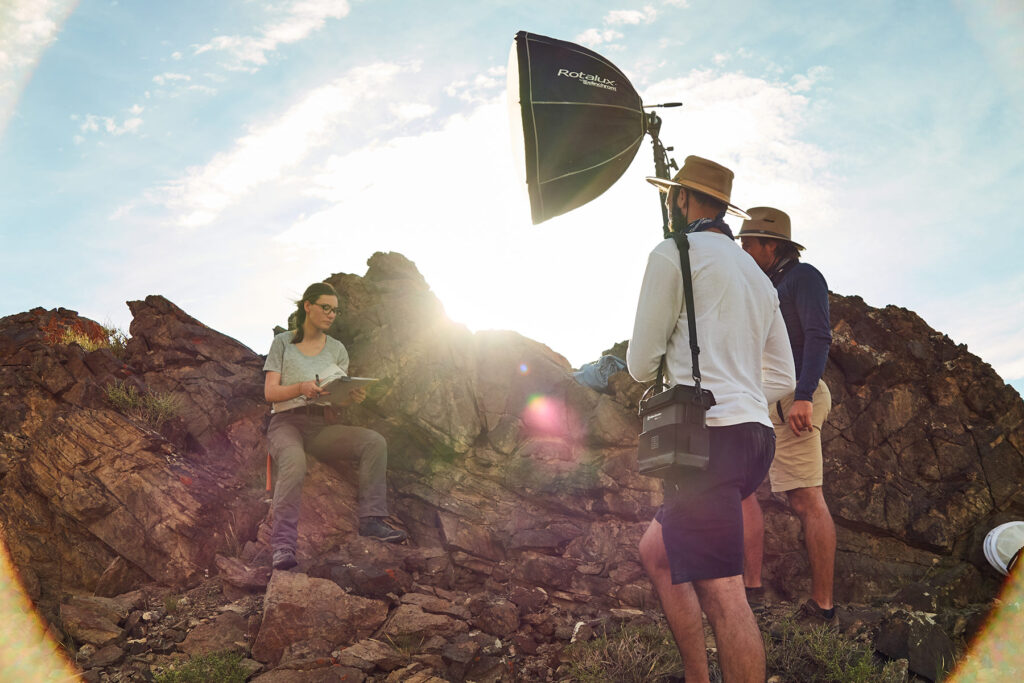
This location was sure to test the Rotalux to its limits. Elinchrom had previously given me the challenge of using just a battery pack and a modifier, which I did in Iceland. On that trip we didn’t have the extreme temperature changes and dust to deal with. Dust, sand and temperature fluctuations destroy equipment. Coupled with the challenge of extremely intermittent access to generator power, I put my setup through its paces.
Choosing to leave the light built through the project paid off. Morning and night, during high noon, and everywhere in between, we were able to throw our little mobile setup into the back of vans, lug it up mountainsides and never have to worry about a thing.
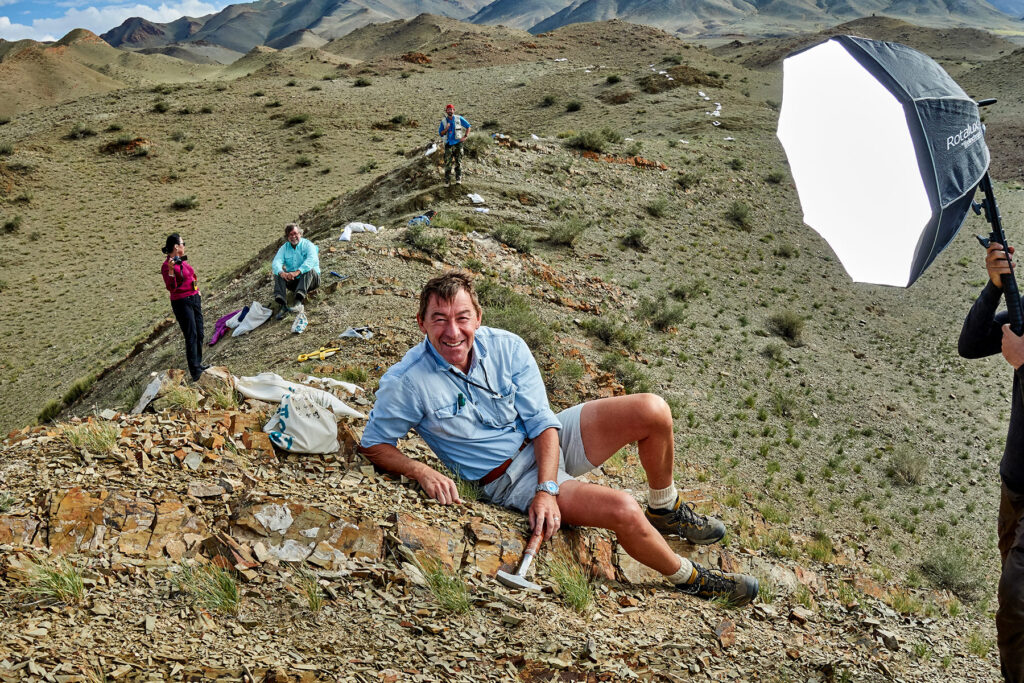
In all, we created a portrait of every member of the 21-expedition team and support crew, as well as several group portraits (yes, lit with just one 100cm Rotalux) and even got to travel into the higher mountain valleys to photograph a family of nomadic horse herders. This same modifier lighted every photograph here.
Elinchrom has a reputation for building sturdy modifiers, but this one stands the test of time.
If you can only buy one modifier, make it an Elinchrom Rotalux.

A two day drive from the nearest airport and pretty much as far as you can get from an ocean: my dream assignment – photograph a group of international geologists as they try to unravel the mysteries of a mass extinction around 365 million years ago. Three weeks of camping in the Altai-Gobi mountains, Mongolia, with […]
The Elinchrom THREE is a fantastic tool suitable for both beginners venturing into studio flash photography and seasoned professionals like wedding photographers who need to adapt swiftly to various locations and lighting conditions. This versatile companion excels in both on-location and studio shooting scenarios. Additionally, it’s perfect for creative photographers eager to experiment and explore new possibilities.
The THREE is lightweight and easy to setup. The convenience extends to its intuitive control through the Elinchrom Studio App, adjusting a breeze. Remarkably compact, it easily fits in one hand, making it highly portable as you move from one location to another.
Today, our focus is on testing the Elinchrom THREE on location, and I created a summer wedding set. Our shooting adventure will take us on various locations, both indoors and outdoors. To capture the essence of the moment, we’ll combine the beauty of natural light with the power of flash, ensuring each set shines at its best.
The location
For this shooting, I chose an old mansion just outside Avesta, in Sweden. This old mansion is surrounded with huge trees, and a big, lush park area, and a beautiful winter garden with vines clinging on to the roof. This location offers a diverse range of light conditions and locations, allowing us to capture a wide range of stunning pictures. Fingers crossed for favourable Swedish summer weather, with both sunshine and clouds to enhance our creative possibilities.
The shooting
I love creating things together and portrait photography is always a teamwork. Achieving a remarkable portrait, classical, fine art, or commercial, requires building trust and comfort with your subject. It’s essential to involve them in your vision, making them an active participant in the creative process. The ultimate satisfaction comes when your model leaves the shoot with as much joy as you experienced during the process. That´s why it´s so important to work with equipment that is reliable and easy to use, the less you have to worry about the technical stuff during the shoot the more you can focus on the connection with the model and the better your images will turn out.
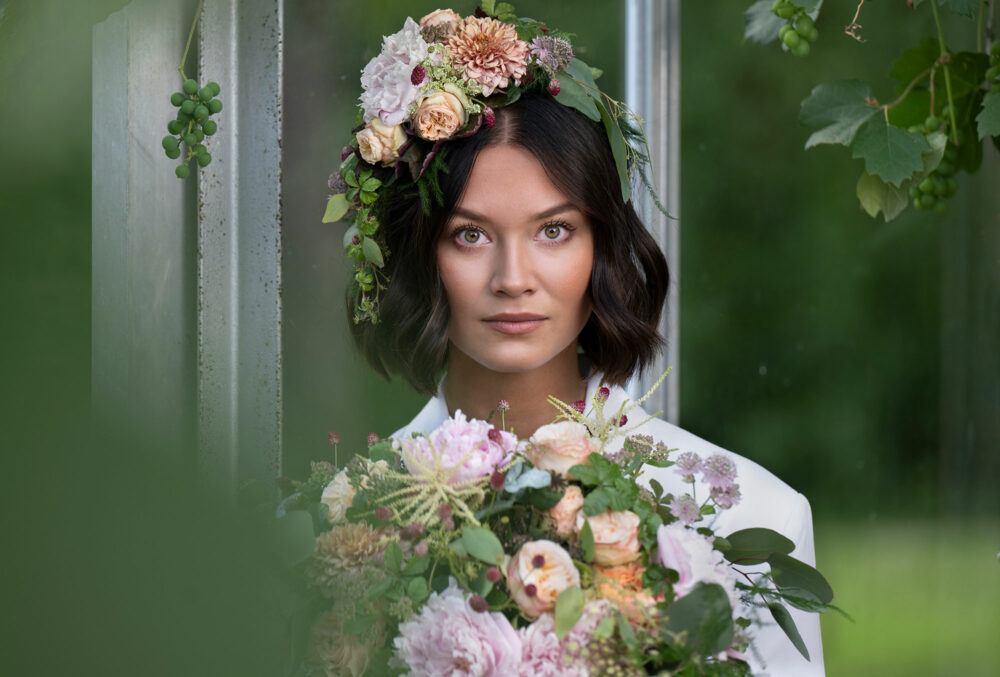

Without flash, with flash, with flash and edited
We began our shoot in the old winter garden, which was located at the far end of the park. The winter garden’s natural light proved to be quite good, benefiting from the absence of direct sunlight and its glass walls on all sides, providing soft and indirect lighting ideal for portraits. When using the darker side of the park as the background, the exposure I set for the surroundings worked well for her face too.
However, as almost all the natural light hitting her face bounced off or shined through the surrounding green foliage, it created a greenish colour cast that somewhat obscured her lovely tan and rosy cheeks. Even though I am almost there with the exposure, I still need to lighten her face during post-production to make it stand out from the background and ensure her eyes are not the darkest part of her face.
Consequently, there’s still significant post-production work required to transform this image into a truly exceptional one, despite the favourable light conditions in the winter garden.
All I needed for this was the compact Elinchrom THREE, the small Rotalux Deep Octa Softbox 70cm (27.5″) and a tripod. With this minimal setup, I could carry everything myself, and it took less than two minutes to set up. It provided a simple solution to fix the issues that otherwise would have required a significant amount of post-processing time. I can now imagine the time saved on delivering a set of twenty images! This way, I obtained an image that’s almost ready for delivery straight out of the camera.
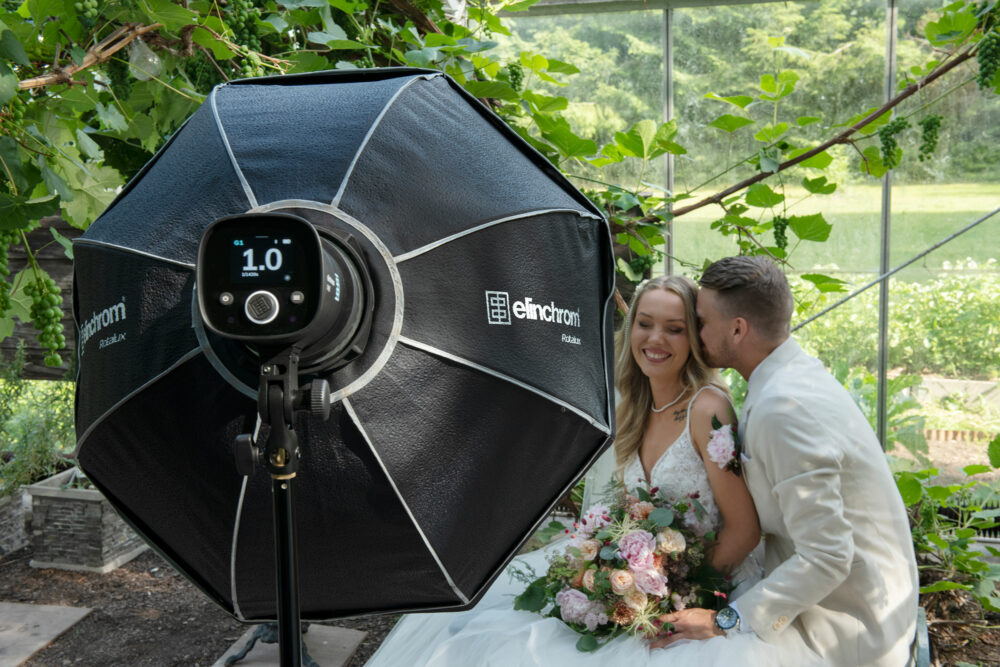
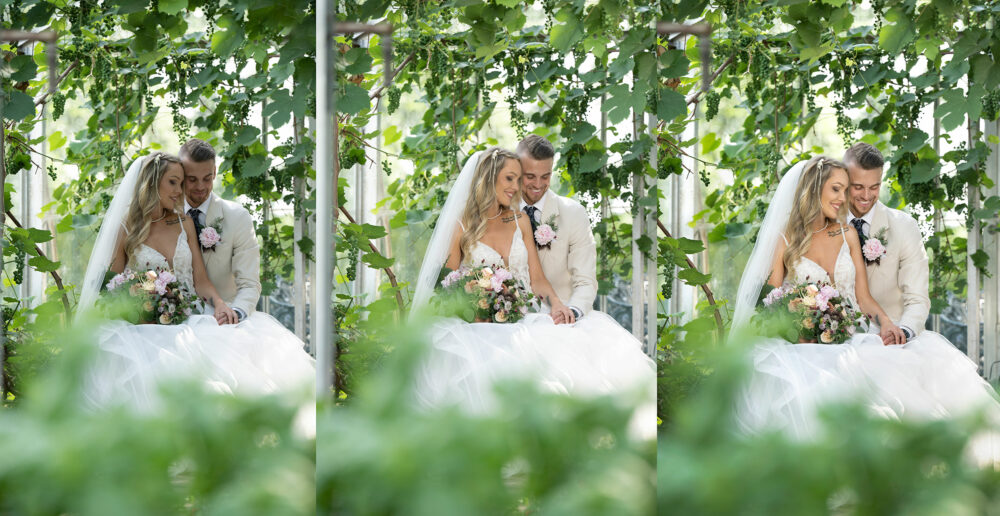
Without flash, with flash, with flash and edited
When shooting the couple, I really wanted to use the left side of the winter garden, facing the part of the park with fewer trees and more sunlight, because on that side the vines made a magical setting, surrounding the couple on all sides. Choosing this location also made it possible for me to use a lower bush of herbs in the foreground to create more depth. Here the natural light conditions where not as good as on the other side, since the background was very much lighter than the couple.
Even though I turned up the exposure with my camera settings as much as I could without losing information in the light parts outside, their faces where very much to dark when using only natural light. Again, the THREE and the Rotalux Deep Octa Softbox 70cm (27.5″) solved the problem and gave me a well-balanced image with beautiful light in the faces straight out of camera.
The last thing we did in the winter garten was some portraits of the bride alone. What I wanted to show with these images was how easy it is to be creative and get a lot of variation on the same location if you do not have to depend only on natural light. And also, how using a flash to light our model gives you the opportunity to control the natural light with your camera settings.
In the first two images I have used a small aperture to darken the background and used two different set ups with the Elinchrom Three and the Rotalux Deep Octa Softbox 70cm (27.5″) to change the character. A backlight for a cinematic look with a little more drama and a classical portrait light to lift her face features and bring out her beautiful eyes. In the last image I have used a big aperture for a light background, and let the natural light lift the shadows, and just like that I got a light and airy portrait with a very natural look.

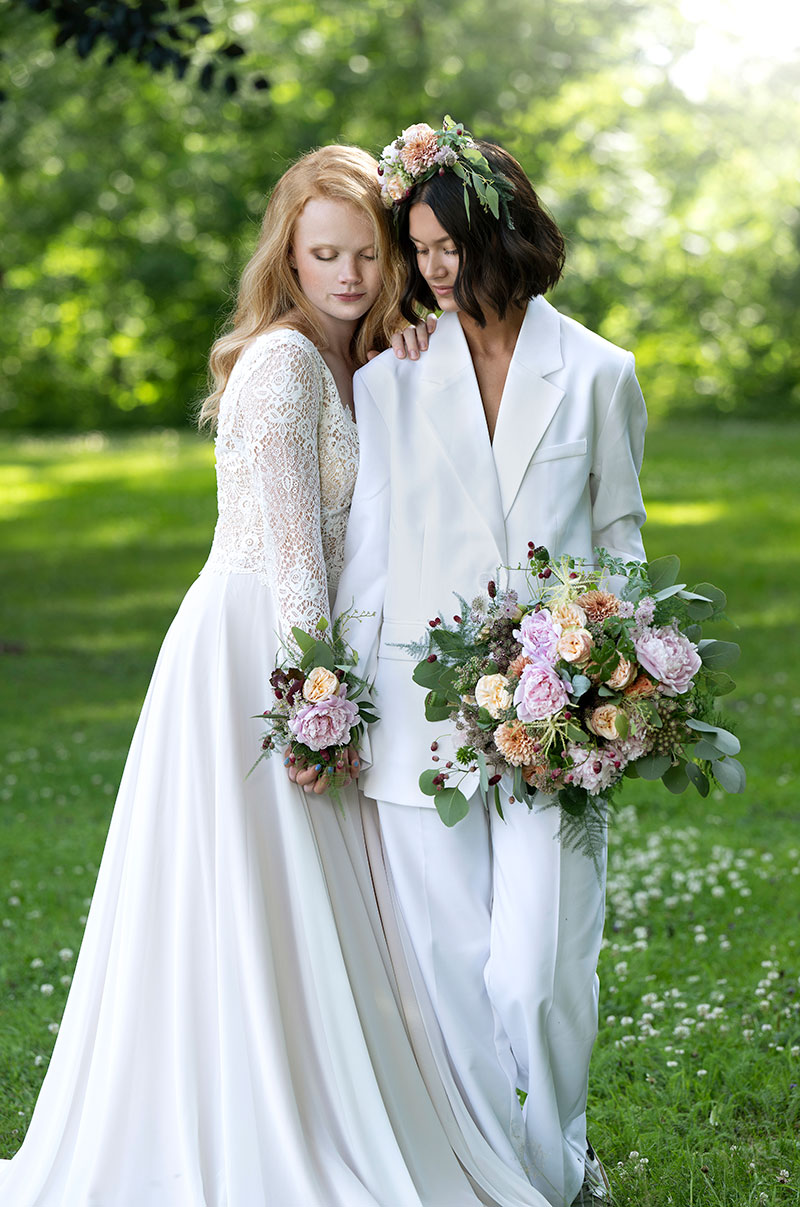
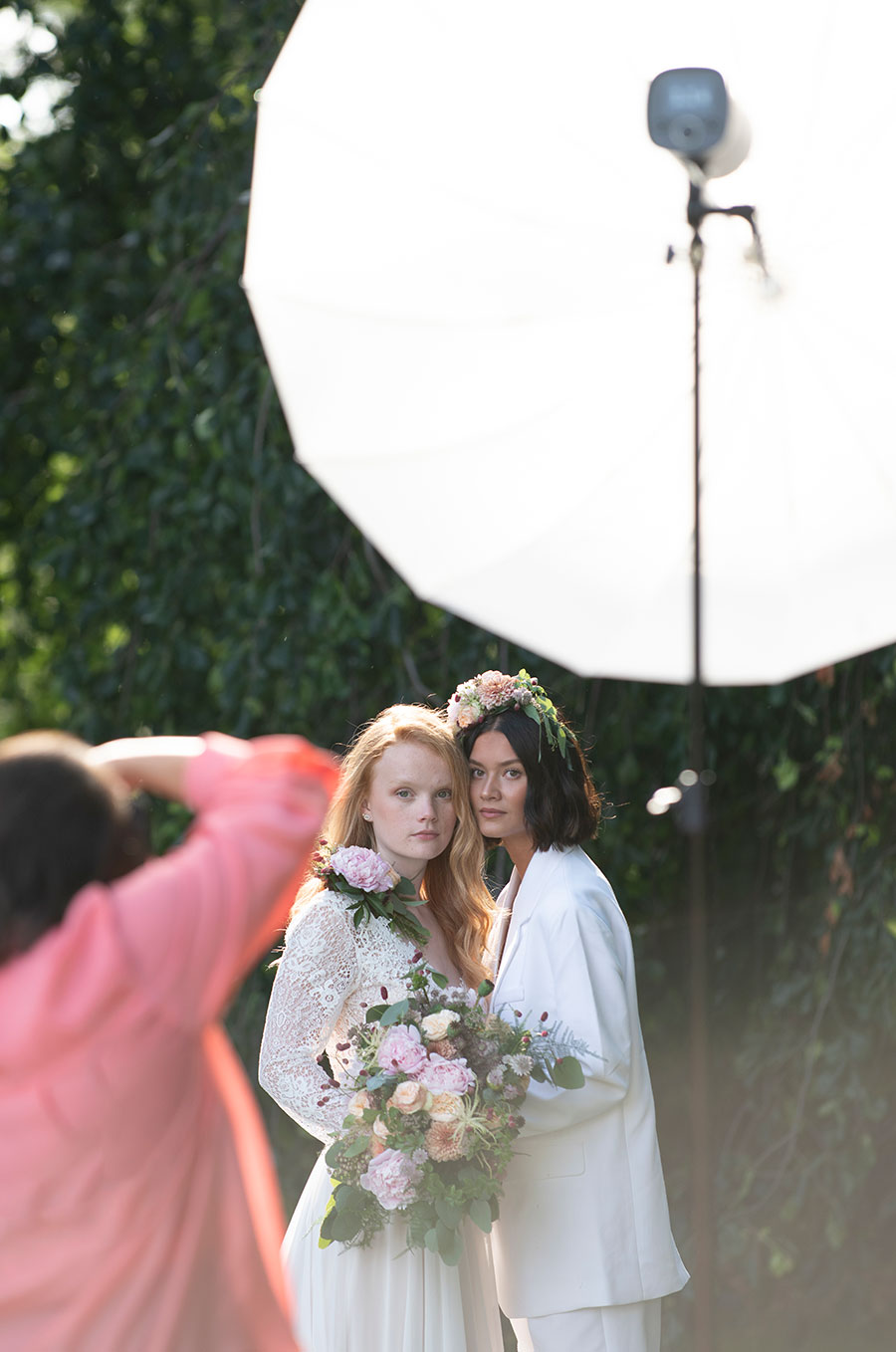
We then continued our photography adventure in the garden of this magnificent mansion, under the 4:00 PM sun, where the light is soft and less harsh than the 12-2 PM sun. I wanted these images to feel outdoors and very natural. I used the Elinchrom THREE and a 100 cm Deep Umbrella White. A shoot through the white umbrella, set straight forward, a couple of meters away from the model, is an easy set up to use if you shoot mainly with natural light but just want a natural way to lighten up a model.
Here I decided to put the models in the sun with the sun hitting their backs to use that as a beautiful backlight. Since I control the light on the models with my flash I can control the highlights in the hair, and make sure that they are not burnt out, with the settings of my camera.
The most challenging thing here was that we now had gotten quite a lot of clouds in the sky which meant the weather change from sun to cloudy every other minute. To be able to keep shooting and not lose any time I therefore had to change settings all the time. Here it really showed how big an advantage it is that the THREE is so easy and quick to adjust. In a heartbeat I could change settings to adapt to the new light conditions and we could make the most of the time we got. A great thing is that I can always choose whether to make the changes directly on the flash, on my transmitter or on the app on my phone. Whatever is easiest for the set up I work with.
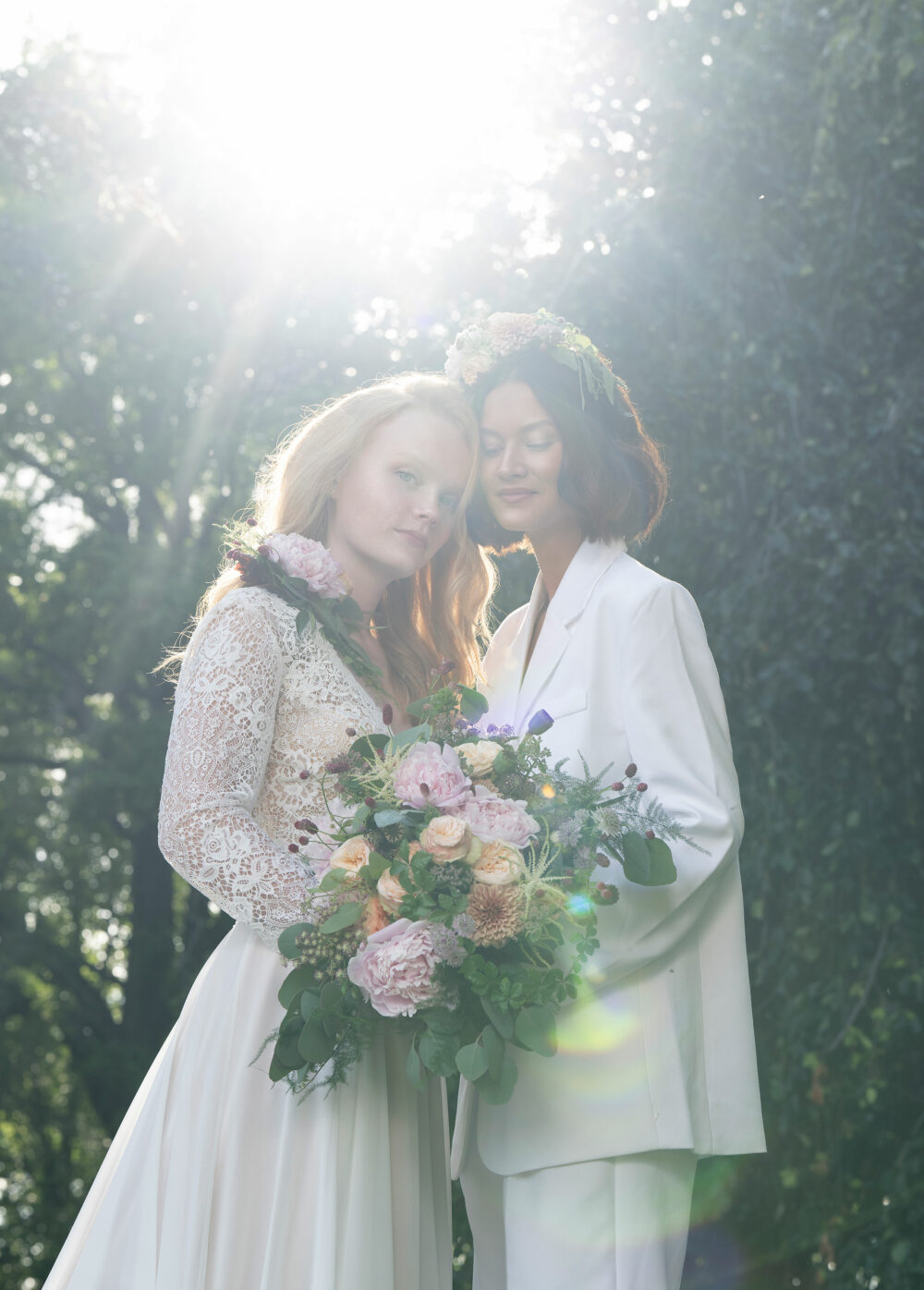
I often get new ideas of things I want to try during the shoot and with the Three being so easy to adjust it is completely effortless to experiment and play around without having to keep the models waiting while I figure things out. Here I tried to lay on the ground, to get a low angle, and shoot directly into the sun for a dreamy and romantic feeling. With the Three through the umbrella, I could still decide just how much light I wanted to meet up with in the faces to be able to see facial expressions and not only silhouettes.
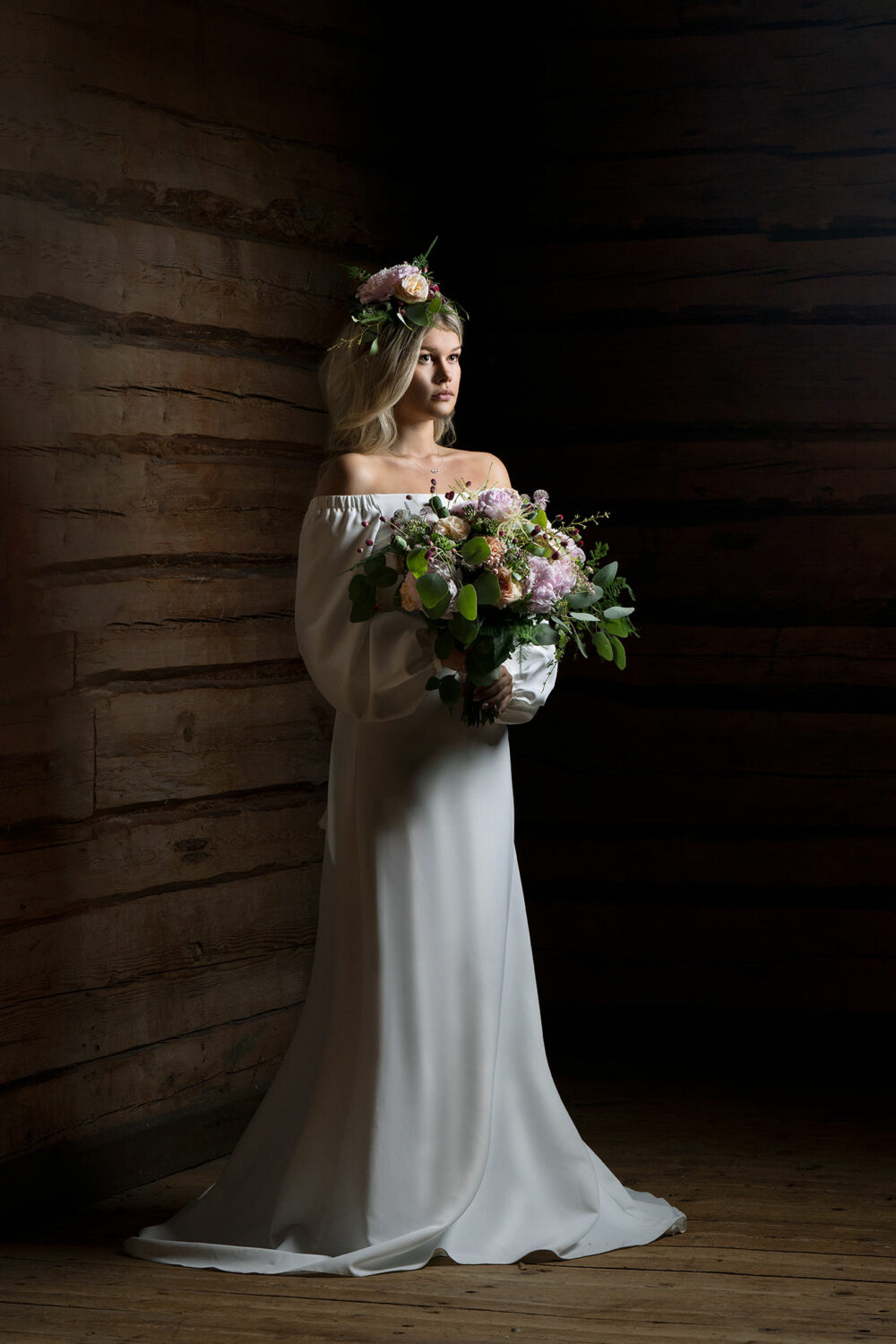

The great thing about working with flash and knowing how to set a good light, especially if you are a wedding photographer where time is always an issue, is that, if you need to, you can make beautiful, professional looking images in any location. I have shot hundreds of weddings over the years and, no, the weather is not always working in my favour. I have had to finish up sessions in boring hallways or even in a hotel corridor but with a nice light no one can tell. Now with the THREE being both compact and powerful it´s not even a hassle to bring it and in some situations, it can be the difference between getting the image or not.
Even though we had to adapt quickly to sudden changes in the weather and shot in so many different places it was a piece of cake with the Elinchrom THREE, and we got beautiful images from all the different locations. The fact that it is so powerful even though it is so small seems almost too good to be true. Even when I shot full, figure and couldn´t work with the flash very close to the model it worked great even though I shot directly into the sun. It is also very easy to be creative on the spot.
In conclusion, the Elinchrom THREE allowed me to capture portraits swiftly and efficiently. I could easily blend it with natural light and a few additional accessories, allowing me to travel light and adapt rapidly to these three scenarios.
Therese Asplund, our long-time ambassador, shares her on-field experience with the Elinchrom THREE, the new 261 Ws Off-Camera Flash with integrated battery. For her first adventure with this flash, Therese did a shooting on a summer wedding theme, directly using the THREE blended with natural light. Discover her journey and impressions about the Elinchrom THREE. […]
Elinchrom, a leader in the high-quality photographic lighting industry, proudly announces the launch of the Elinchrom THREE, an innovative addition to their line of versatile lighting solutions. Designed to meet the rigorous demands of modern photographers, the Elinchrom THREE is a compact, portable off-camera flash that delivers exceptional performance and control.
Simon Whittle, CEO of Elinchrom, states,“The Elinchrom THREE is a game changing product that epitomizes the seamless blend of power,portability, and perfection. With 261 Ws of pure performance, photographers will experience perfect illumination that brings every image to life. This product is designed to amplify creativity and elevate the art of photography”.
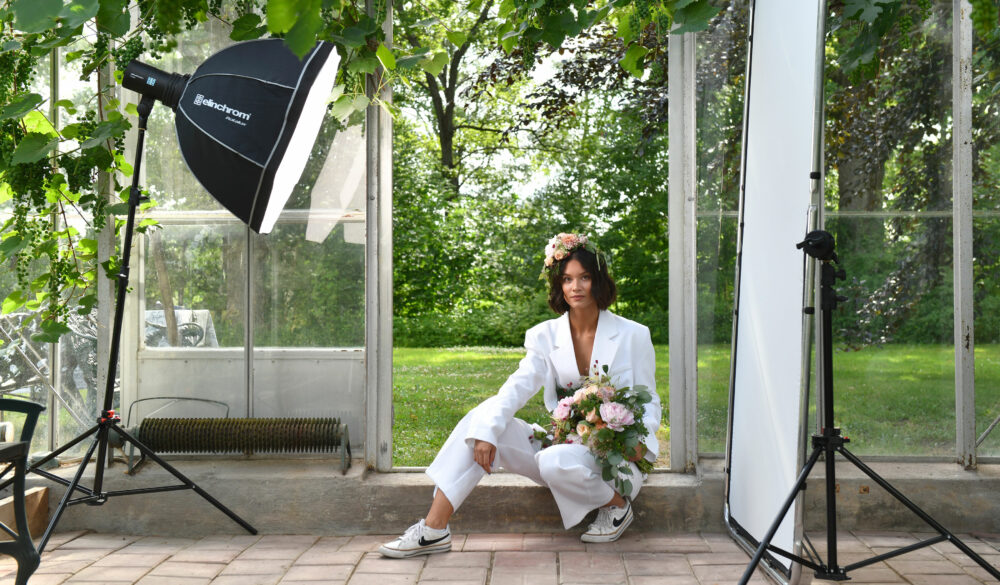
Therese Asplund, an award-winning Swedish photographer was among the first to try out the Elinchrom THREE. She was tasked with creating the imagery linked to this release of the THREE.
«Therese Asplund embodies the spirit of innovation that we strive for at Elinchrom. Her work serves as an inspiring example of the artistry that can be attained with high-caliber equipment» adds Simon Whittle.
To discover her journey and impressions about the Elinchrom THREE, please visit XXX PAGE.
Elinchrom FIVE Monolight Kit
EL20960.1
1x Elinchrom FIVE Monolight
1x Elinchrom FIVE Battery – EL20962
1x Elinchrom Wide Reflector 16 cm (6.3″) – EL26170
1x Elinchrom 65W USB-C Wall Charger – EL11052
1x Elinchrom Hard Case for FIVE – EL33255
2 Year Warranty
MSRP*
$1’849 USD / €1’599 EUR
*Manufacturer’s suggested retail price / excluding taxes
Elinchrom FIVE Monolight Dual Kit
EL20961.2
2x Elinchrom FIVE Monolight
2x Elinchrom FIVE Battery – EL20962
2x Elinchrom Wide Reflector 16 cm (6.3″) – EL26170
2x Elinchrom 65W USB-C Wall Charger – EL11052
1x Elinchrom Storage Bag – EL33236
2 Year Warranty
MSRP*
$3’649 USD / €3’179 EUR
Elinchrom, a leader in the high-quality photographic lighting industry, proudly announces the launch of the Elinchrom THREE, an innovative addition to their line of versatile lighting solutions. Designed to meet the rigorous demands of modern photographers, the Elinchrom THREE is a compact, portable off-camera flash that delivers exceptional performance and control. Simon Whittle, CEO of […]
Undertaking an artistic project always presents its own set of challenges, and this adventure posed a double challenge for me. On the one hand, we had our own expectations to contend with, while on the other hand, the audience always expects us to demonstrate tangible results.
As a photographer, our objective is to convey the emotions experienced on location through our images, and to share those emotions with all who view our photos, whoever they may be.
Throughout this project, I found myself capturing portraits facing a camera, which proved to be a tremendous challenge. I had to consider both my subject and the surrounding environment while remaining focused on the spectators present and the ongoing filming of the documentary.
If I were to solely concentrate on my own photograph, I would lose the connection with the viewer, contradicting the very purpose of conveying emotions and reflections through my work, while also sharing the encounters and struggles of the individuals we discover in the film.
The light in Lapland in January is extraordinary, a sort of everlasting sunset with a lingering rosy hue that persists for hours—a true dream for photographers. However, the temperature fluctuates between -35 and -15 degrees Celsius, if we’re fortunate, and this factor can swiftly transform an idyllic moment into a real nightmare.
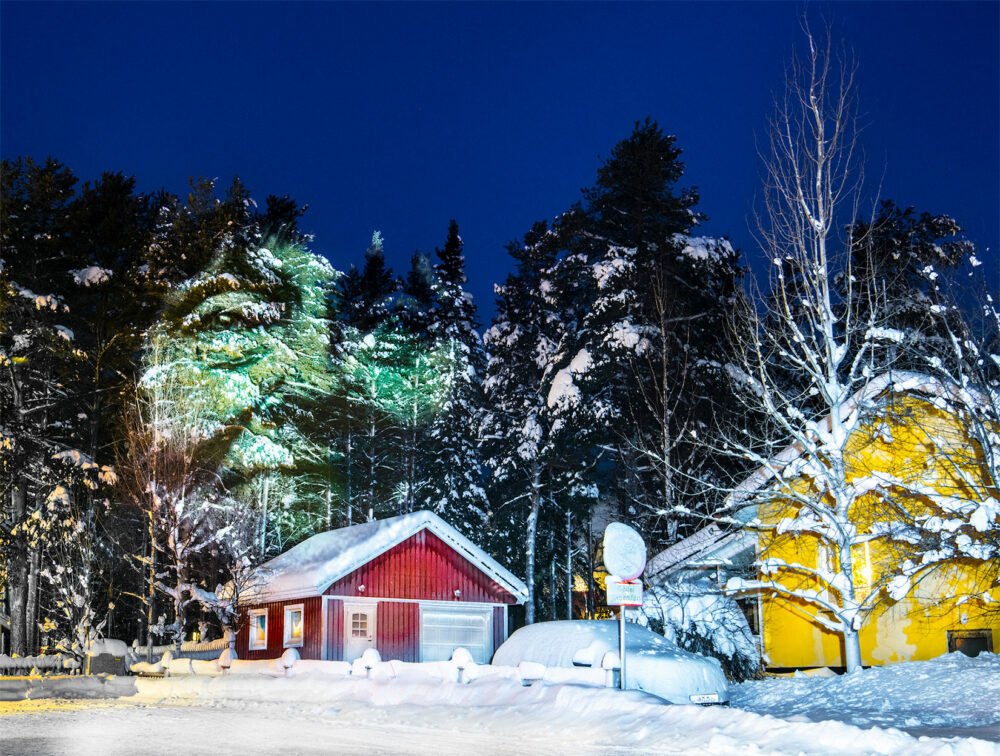
There is a constant uncertainty in this type of project. While it provides an opportunity to form meaningful connections and experience intense emotions, it also entails significant technical and human challenges.
I had never really encountered such extreme cold before, and I had little knowledge of its impact on both myself and my equipment. To give you an idea, the liquid crystals in my camera’s viewfinder began malfunctioning after a few minutes, and some never returned to normal. My phone also suffered, although it fared better, luckily.
Another major challenge, which can be detrimental to equipment, is condensation. In such conditions, you cannot quickly escape into the warmth, as it would be akin to submerging your gear in a lake. We had to create zones of heat transition, from the car boot to the patio, and then to the entrance, and so on. Everything becomes more complicated, more extreme in such circumstances, but the landscapes and encounters make it all worthwhile.

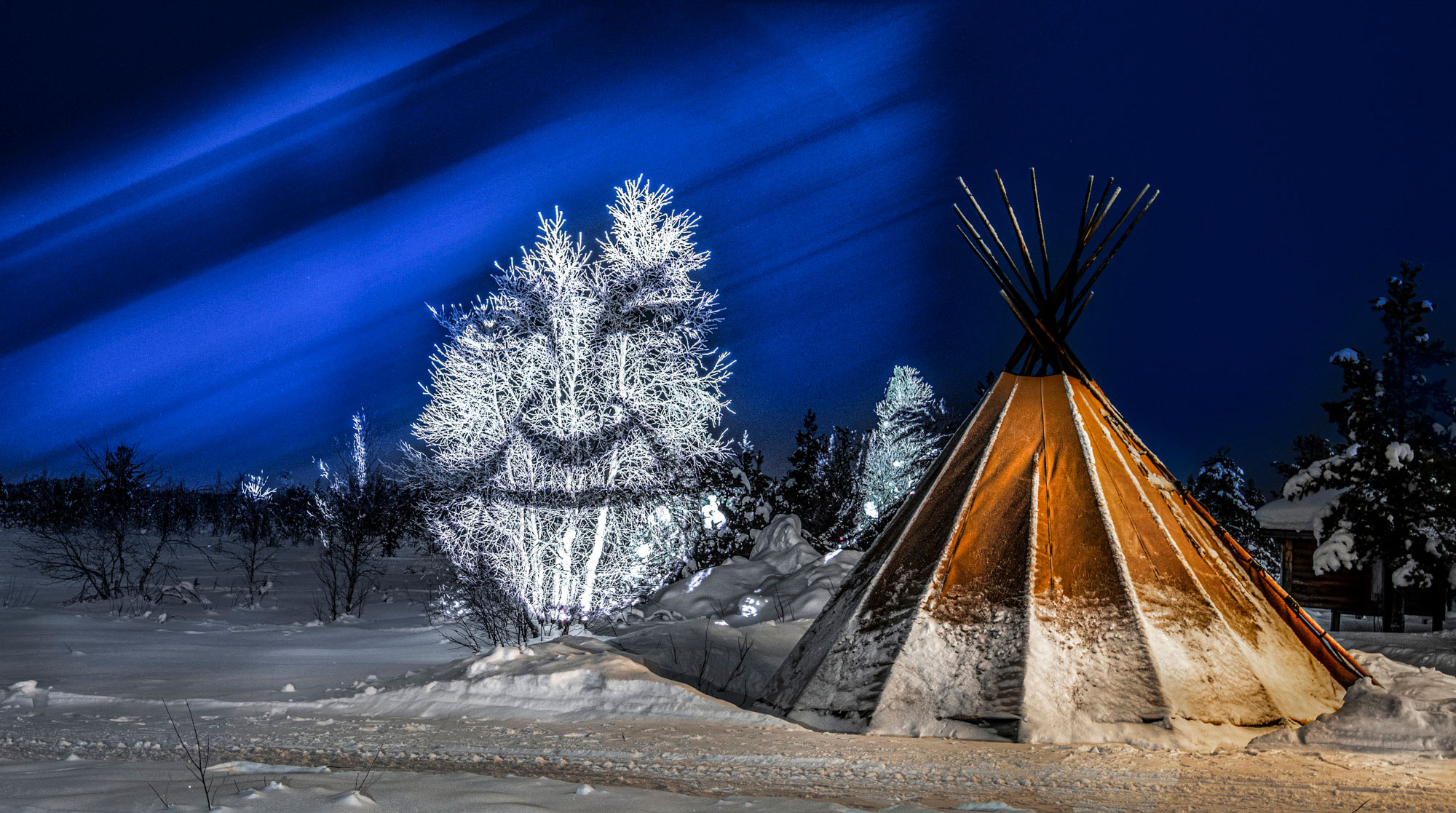
I have worked with Elinchrom equipment from the very beginning, and it has been one of my most faithful travel companions. For this particular adventure, I opted to use the brand new Elinchrom FIVE, primarily for two reasons. During a shoot, portrait sessions are fast-paced and improvised. There’s no comfortable studio or sophisticated screen for retouching. We had to photograph people wherever we met them, regardless of weather and lighting conditions.
The Elinchrom FIVE is an incredibly powerful flash, providing me with valuable options when improvising a portrait. With this, I can enhance a backlight scene or illuminate a person and their broader surroundings, if necessary. Additionally, its extended battery life gave me more confidence, as the cold quickly drains batteries, as I discovered.

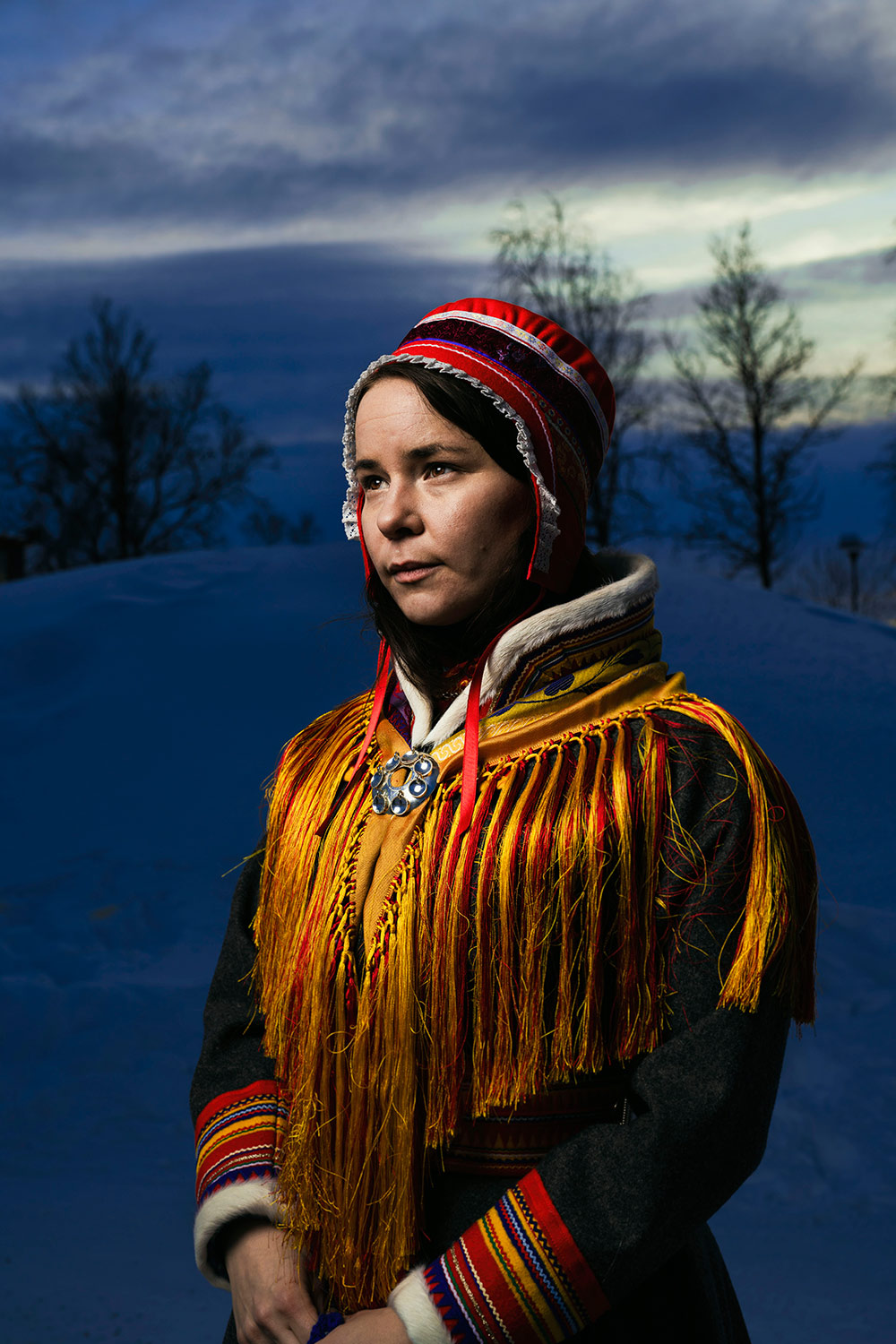
There have been times when I had to hold the flash with my left hand while holding the camera with the other hand. This poses a challenge due to the weight of the equipment, but this slight discomfort forces me to work extremely quickly, making the shot instinctive. It is truly ingrained in my portraitist DNA to let the moment unfold without overthinking, to instinctively experience the moment without really knowing what the result will be.
When it comes to lighting, it was essential for me to travel light. For almost all of my portraits, I use the Rotalux Square Softbox 70cm (27″) due to its convenience when travelling. It’s ideal for close-up portraits, but when combined with the power of the Elinchrom FIVE, it also allows me to illuminate a wider area while keeping the subject as the focal point of the light stream. In my opinion, it’s an indispensable combination.


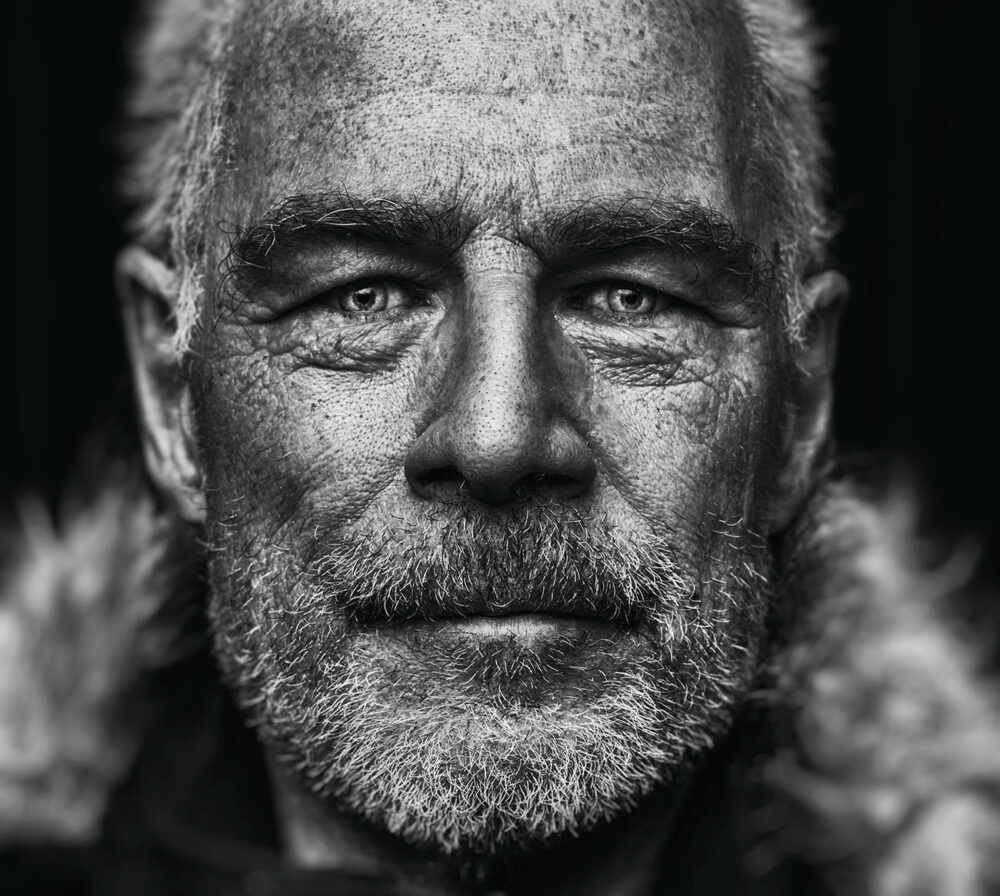
Philippe Echaroux is a photographer who uses his art to denounce the consequences of deforestation and the dangers of climate change. In partnership with Canal+ , Philippe embarked on a journey to Lapland, aiming to highlight the impact of climate change on the local inhabitants in the heart of January. During this trip, Philippe faced […]